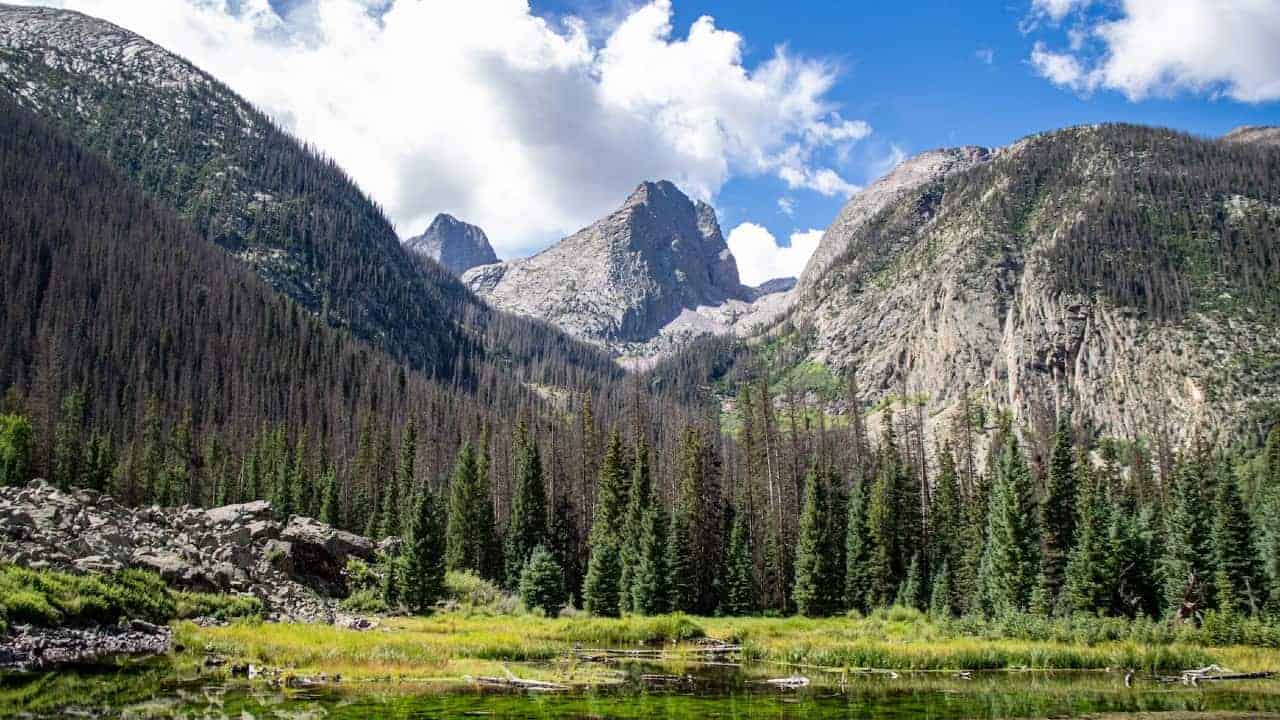Rugged trails, soaring peaks, babbling streams, meadows packed full of wildflowers, and sparking lakes are just a few of the natural wonders you can enjoy when dispersed camping in Colorado.
But with so many enticing options, choosing a dispersed campsite in the Centennial State can also be as overwhelming as choosing a meal from a mouth-watering dinner buffet. How can you pick one out of so many great options? Well, my detailed guide aims to help you do exactly that. By the end of this list, you will have a new favorite free camping spot in this magnificent state.
Overview of Free Campsites in Colorado
The Western United States offers many opportunities to find beautiful dispersed campsites, but few states do it as well as Colorado.
The Centennial State is an undeniable cornucopia of outdoor grandeur. In almost every corner of Colorado, you can set up camp anywhere ranging from the highest peaks to the tallest sand dunes.
Colorado offers you a chance to explore 42 national wilderness areas, 2 national grasslands, 11 national forests, 8 national monuments, and 4 national parks. Federal agencies own approximately 65% of Colorado’s forests and they allow free camping on most of their lands.
But more important than the stats and numbers is the all-encompassing love the locals have for their state. You will be hard-pressed to find a Coloradan that doesn’t consider camping one of their favorite activities. The Cenntenial State has so much adoration for outdoor hiking, skiing, camping, fishing, and other outdoor hobbies, and it can be seen in the way they take care of their campgrounds.
Dispersed Camping Colorado Map
List of Colorado Dispersed Camping Areas
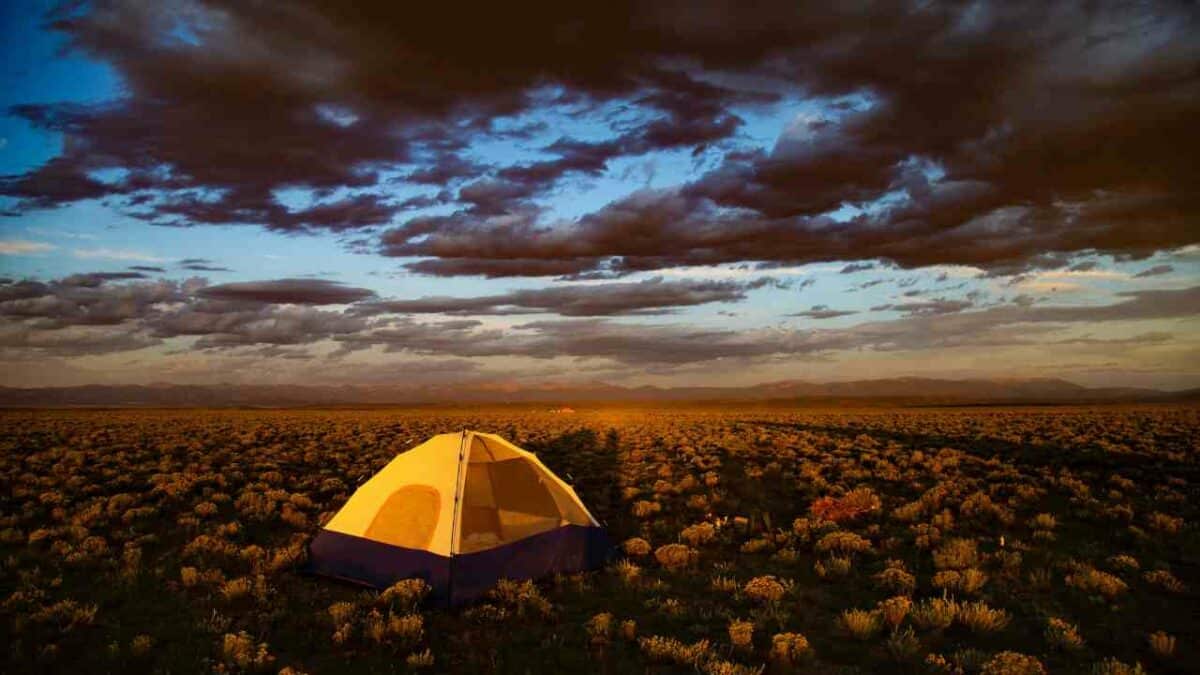
Since “best” in this case depends on what you are looking for, we’ve made sure to include areas that offer different landscapes, amenities, and visitor frequency. But rest assured that they are all tried and true and that you’ll have a great time checking out any of these Colorado dispersed camping areas.
Silverton
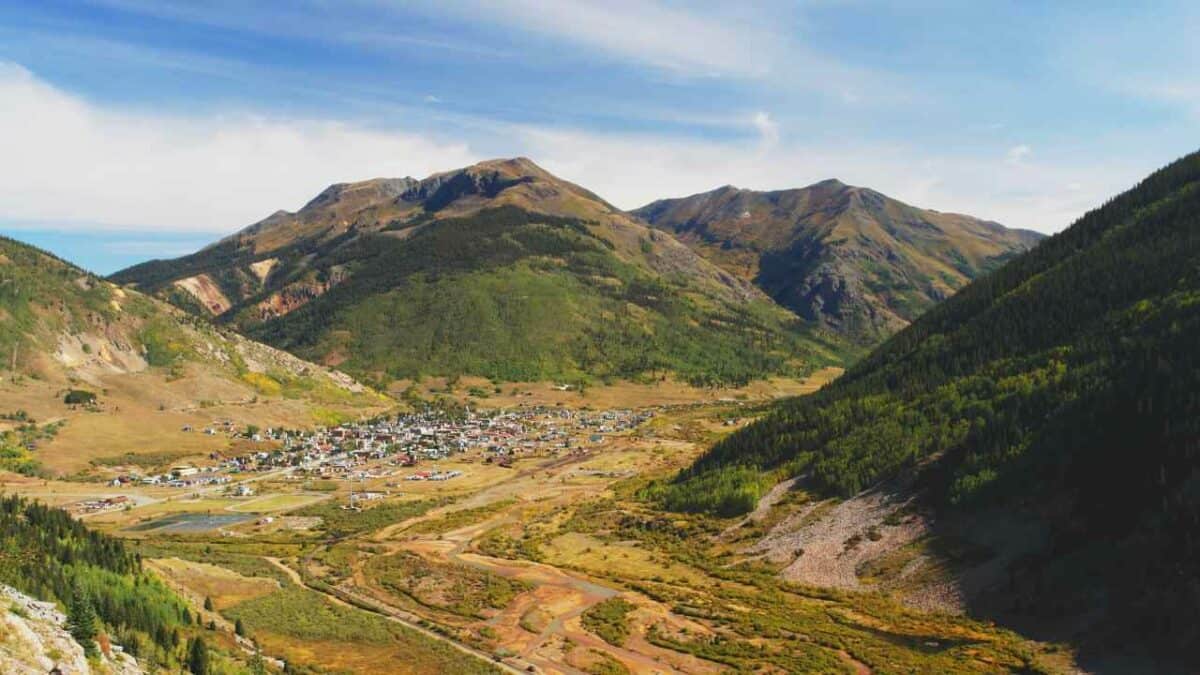
The town of Silverton is surrounded by Bureau of Land Management land and USFS lands; this makes it an ideal base for dispersed camping and exploring the surrounding nature. Many of the great dispersed camping in Colorado areas are located within the magnificent San Juan National Forest.
The rocky San Juan Mountains are famous for their spectacular scenery. Those same mountains provide the backdrop to some of the best dispersed camping in the Centennial State.
Aside from San Juan, Silverton offers access to Uncompahgre and Rio Grande National Forests. Since Silverton is a high alpine location, you will be able to access many of its hidden gems if you bring a capable 4WD vehicle.
Silverton is located along the famous Million Dollar Highway between Durango and Ouray. Being a historic mining town, Silverton itself is also worth exploring. The One Hundred Gold Mine will take you deep underground. And this is just one of many reasons to basecamp near Silverton.
The higher elevations around Silverton can be snowy well into the summer, so you will need to pack warm clothes and weatherproof tents even if you are planning a trip for June.
Some of the best free dispersed campsites near Silverton include:
Kendall Camping Area
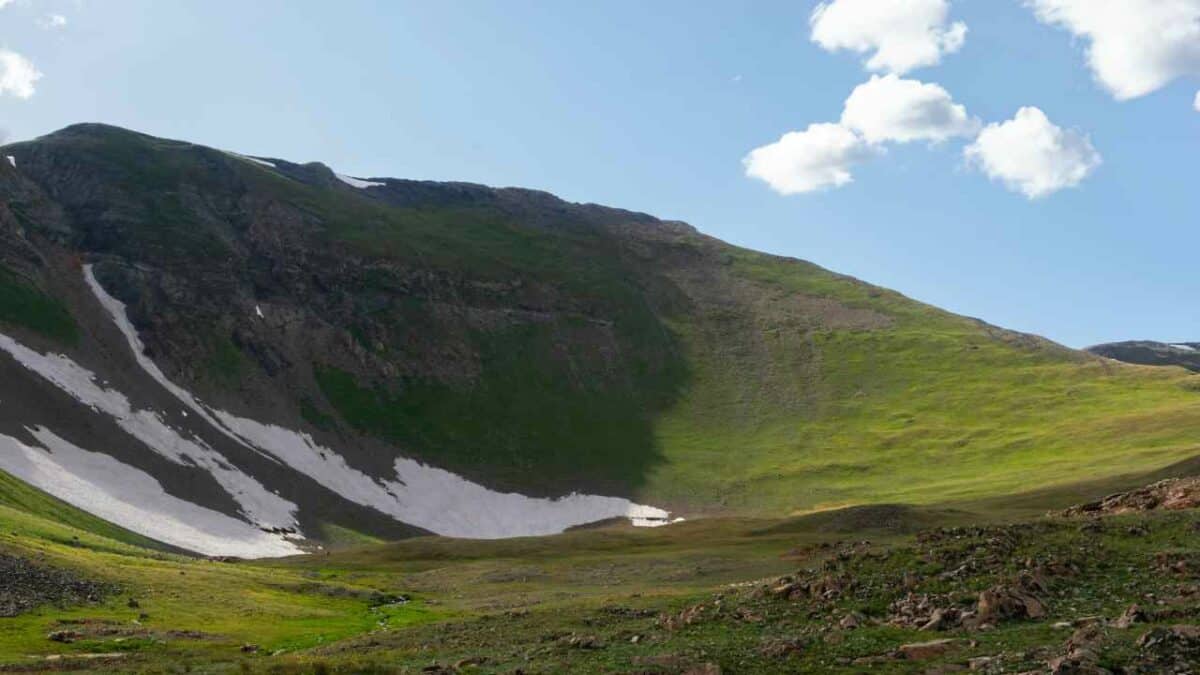
- Crowds: Busy
- Water: No
- Restrooms: Yes
- Distance to Silverton: 3 miles
- Map
Managed by the San Juan National Forest and located just 3 miles from Silverton, the Kendall Camping area is one of the most popular dispersed campgrounds near the town. It has vault toilets and is big enough to accommodate most rigs.
The road to the Kendall Camping Area isn’t in the best condition, but it’s still accessible for most vehicles. The area is right next to the Million Dollar Highway, so you won’t have trouble finding it.
Tucked in between the trees along the banks of Mineral Creek, it’s a great place to set up camp even in the busy season. There’s enough distance between tents and the people who camp here are well-behaved, so you can expect peace and quiet even when it’s busy.
Sultan Creek Dispersed Area
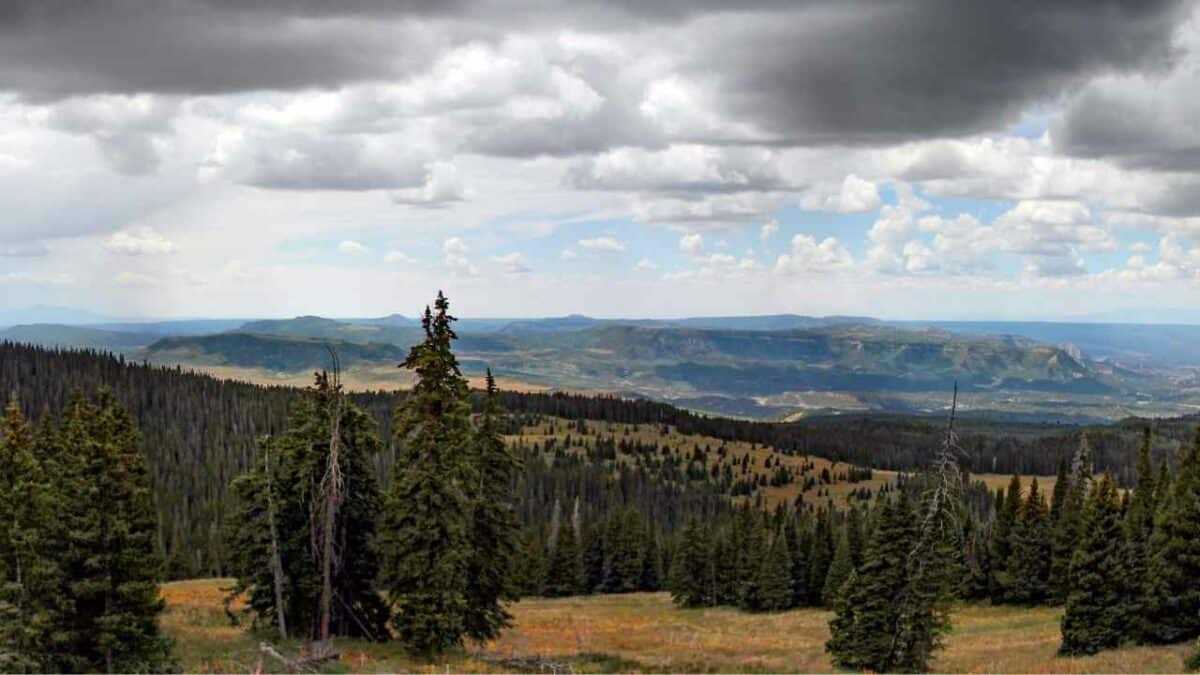
- Crowds: Moderate
- Water: No
- Restrooms: No
- Distance to Silverton: 5 miles
- Map
If you are not a fan of crowds, Sultan Creek is a better option. Located just off Highway 5050, 5 miles from Silverton, Sultan Creek is a scenic, peaceful, and clean area that isn’t frequented by as many campers as the other dispersed campsites. It’s close to a handful of beautiful hiking trails and can easily accommodate most RVs and trailers.
Little Molas Lake
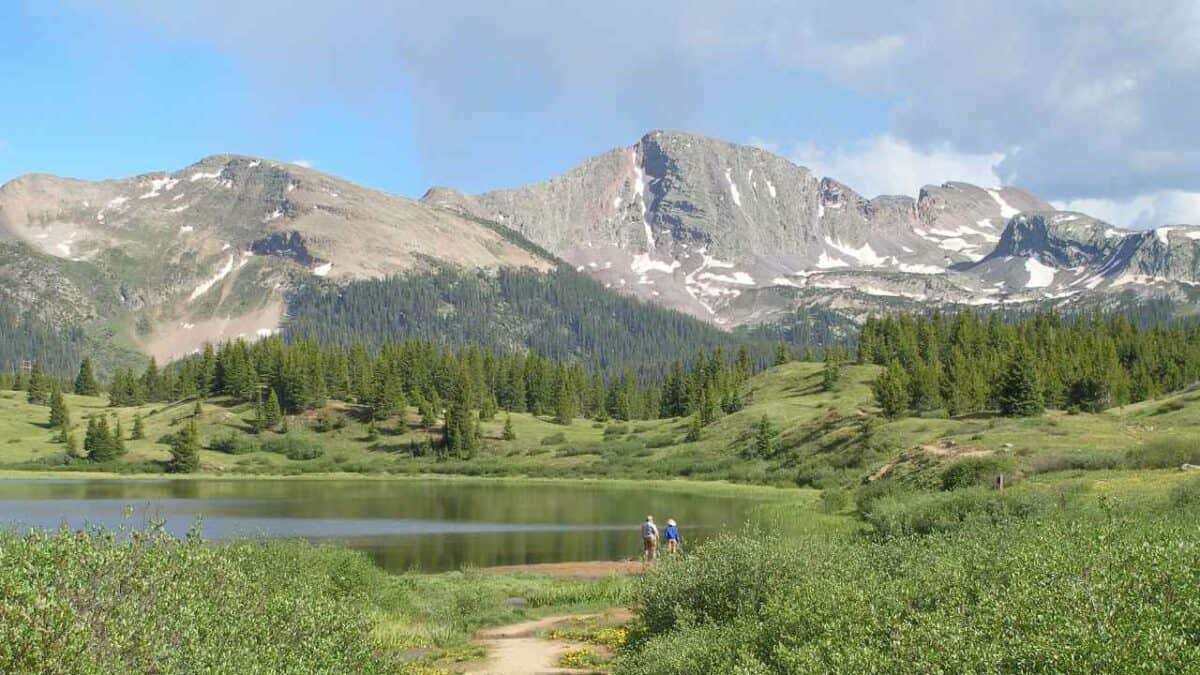
- Crowds: Busy
- Water: Can be filtered from the lake
- Restrooms: Yes
- Distance to Silverton: 8 miles
- Map
If you don’t mind driving a bit further away from the town, dispersed camping at Little Molas Lake will reward you with pristine alpine scenery. Just make sure to prepare for the high elevation and pack accordingly.
Little Lake Molas looks more like a designated campground than a free camping area. It’s neat, has restrooms, and can accommodate medium-sized trailers and RVs.
When you are done exploring the wilderness surrounding Silverton, consider exploring the area near Durango, which is close to Silverton. See our guide to dispersed camping near Durango for more information.
Aspen
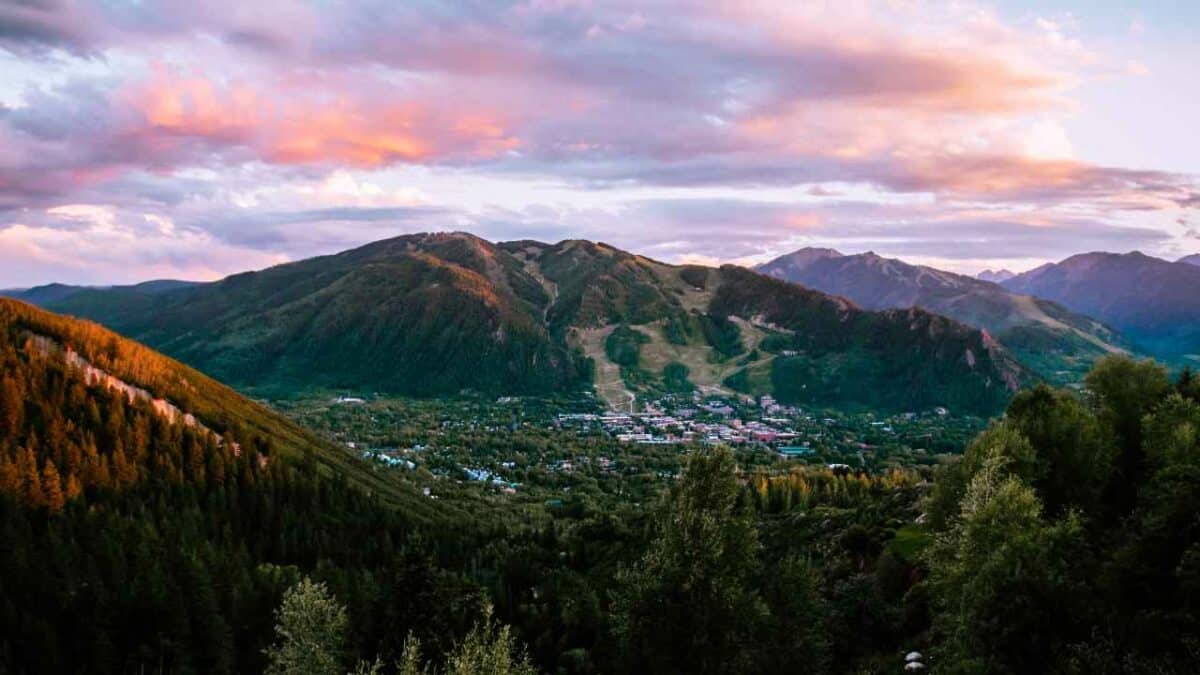
Know for its glitz and glamour in addition to the beautiful surrounding nature, Aspen is one of the best and most famous fountain towns in the country. Aspen is a great base to explore the Roaring Fork River and Maroon Bells, and it offers countless options for camping, hiking, and any other outdoor activity you can imagine.
While finding a dispersed campsite near Aspen can be tricky, it’s undoubtedly worth it. To make it easier, here are some of the best dispersed camping in the area:
Lincoln Creek
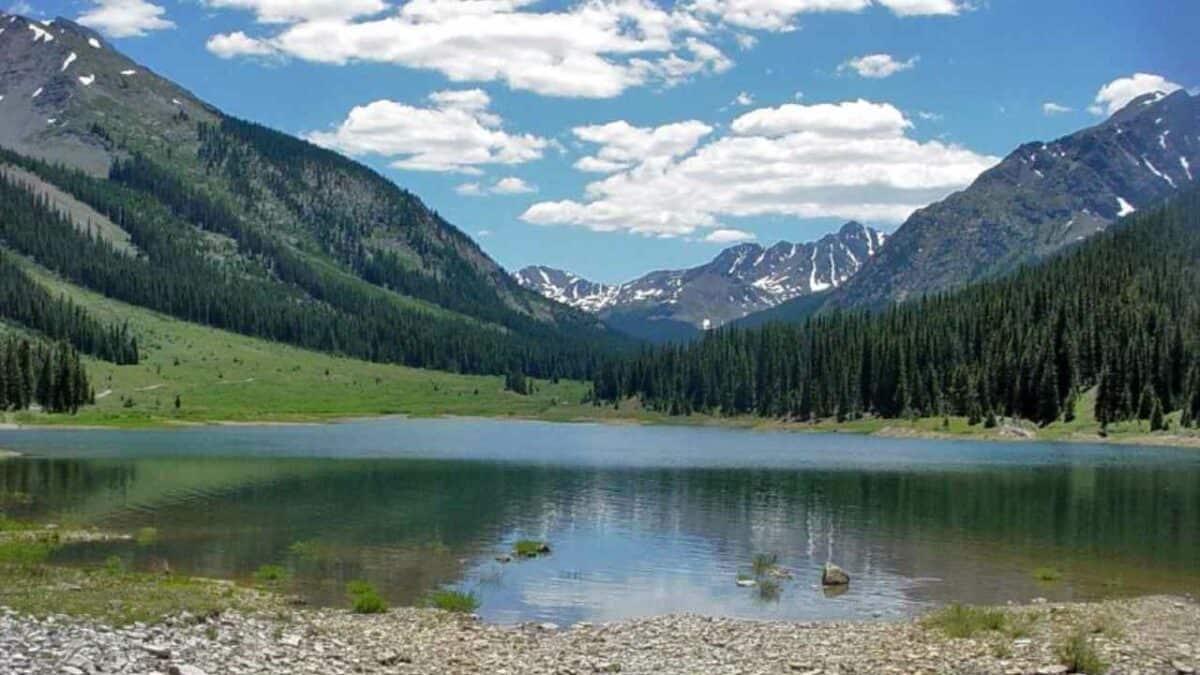
- Crowds: Busy
- Water: No
- Restrooms: No
- Distance to Aspen: 11 miles
- Map
Located at the back of Lincon Creek Road, this beautiful dispersed campground is just 20 minutes from Aspen. This makes it very busy, especially on the weekends, so make sure to get there early.
It has 22 individual campsites, a few of which have direct creek access. While camping here is free, there is a five-night limit that’s strictly enforced.
Portal Campground
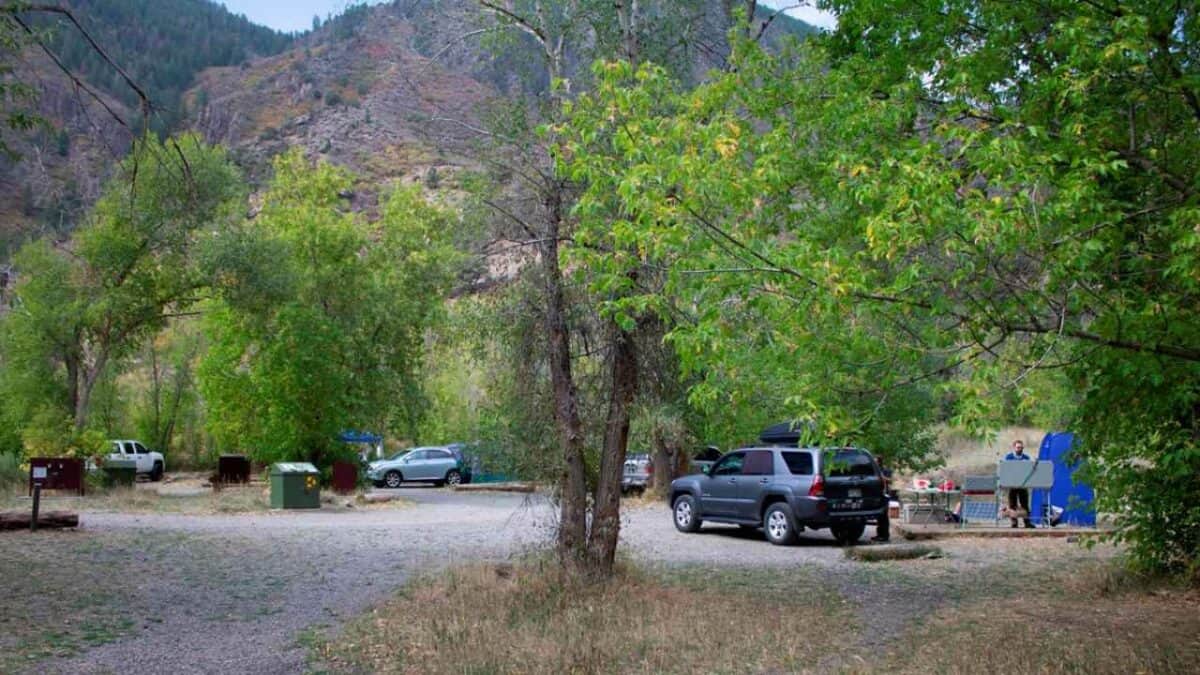
- Crowds: Moderate
- Water: No
- Restrooms: No
- Distance to Aspen: 17 miles
- Map
Right next to Grizzly Reservoir, you will find the Portal dispersed campground. Aside from two vault toilets, it doesn’t offer any amenities, but it offers access to wonderful hiking trails, fishing spots, and offroading. Reaching the Portal Campground is not easy; it’s best to bring a 4WD vehicle with high clearance.
Pearl Pass Dispersed Camping
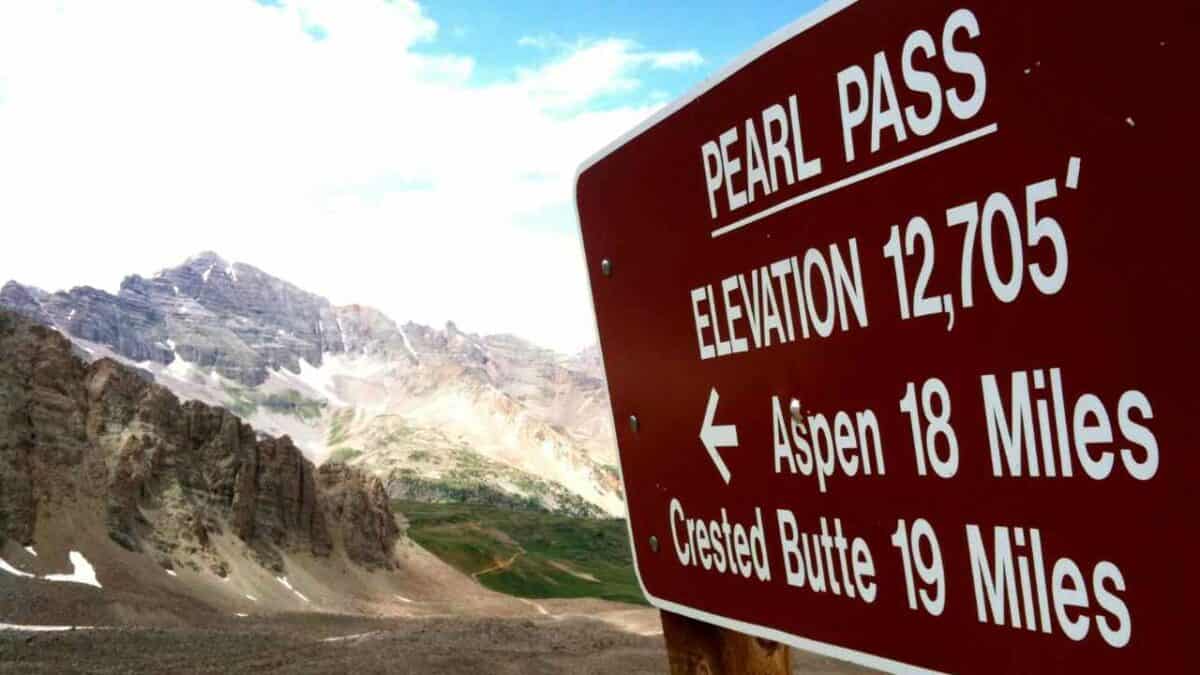
- Crowds: Moderate
- Water: No
- Restrooms: No
- Distance to Aspen: 16 miles
- Map
You will find 7 dispersed camping sites along the beautiful Castle Creek, right off Pearl Pass Road. This camping area can be a great base point for hiking up to Castle Peak or simply exploring the surrounding wilderness.
Sayres Gulch Campground
- Crowds: Light
- Water: No
- Restrooms: No
- Distance to Aspen: 32 miles
- Map
The Sayres Gulch campground is 32 miles from Aspen, so not that close, but I’ve included it as it’s a great place for those who want to escape the hustle and bustle of Aspen. It’s located right next to the Forest Service Road 382 and is very rarely crowded.
Buena Vista
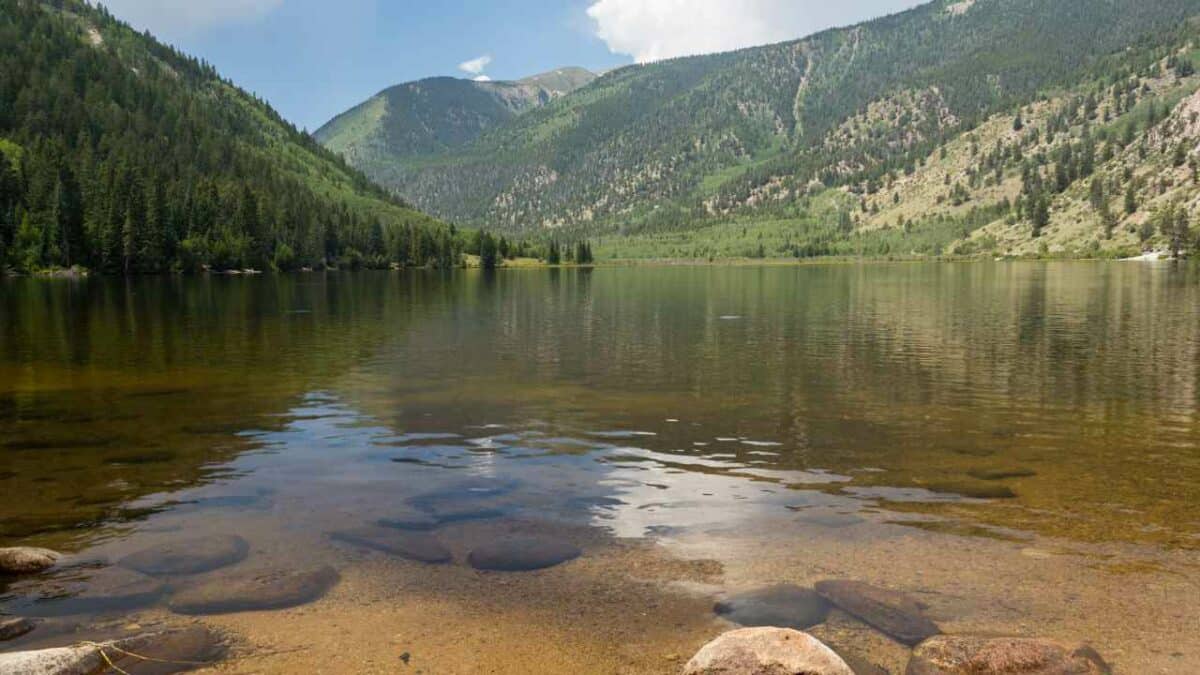
Situated next to the Arkansas River, at the base of Collegiate Peaks, the town of Buena Vista offers many opportunities for free dispersed camping in Colorado. Most of these campsites are located in the San Isabel National Forest. One of Colorado’s most beautiful mountain towns, Buena Vista is just teeming with outdoor activities. And since the Arkansas River is right there, it’s a great place for campers who also love trophy trout fishing and epic whitewater rafting.
Here are some of the best dispersed campsites near Buena Vista:
Cottonwood Pass
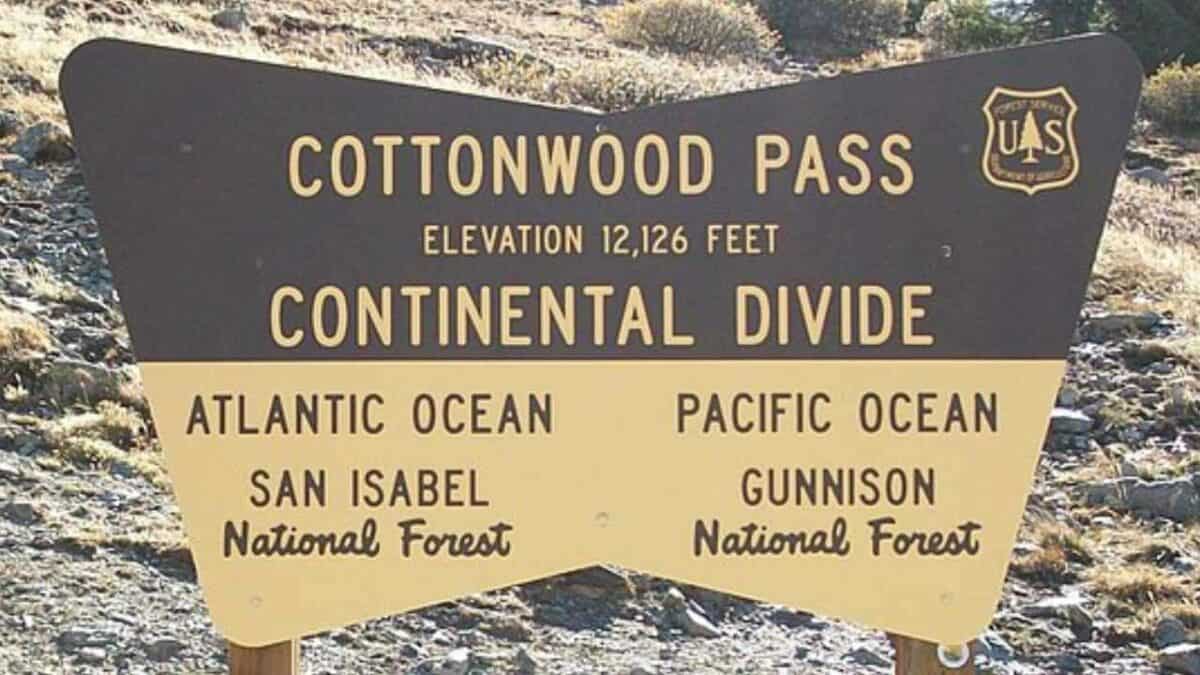
- Crowds: Moderate
- Water: No
- Restrooms: No
- Distance to Buena Vista: 6 miles
- Map
Located just 6 miles from Buena Vista, Cottonwood Pass is very popular among locals and visitors alike. It is surrounded by a number of scenic hiking trails, including the famous Colorado Trail.
The incredible mountain scenery makes it easy to forget that you are just a stone’s throw away from downtown Buena Vista. The camping area is also very close to the Cottonwood Hot Spring.
While not every individual site at Cottonwood Pass allows for total privacy, rest assured that every single one feels peaceful and remote.
Clear Creek Reservoir Campgrounds
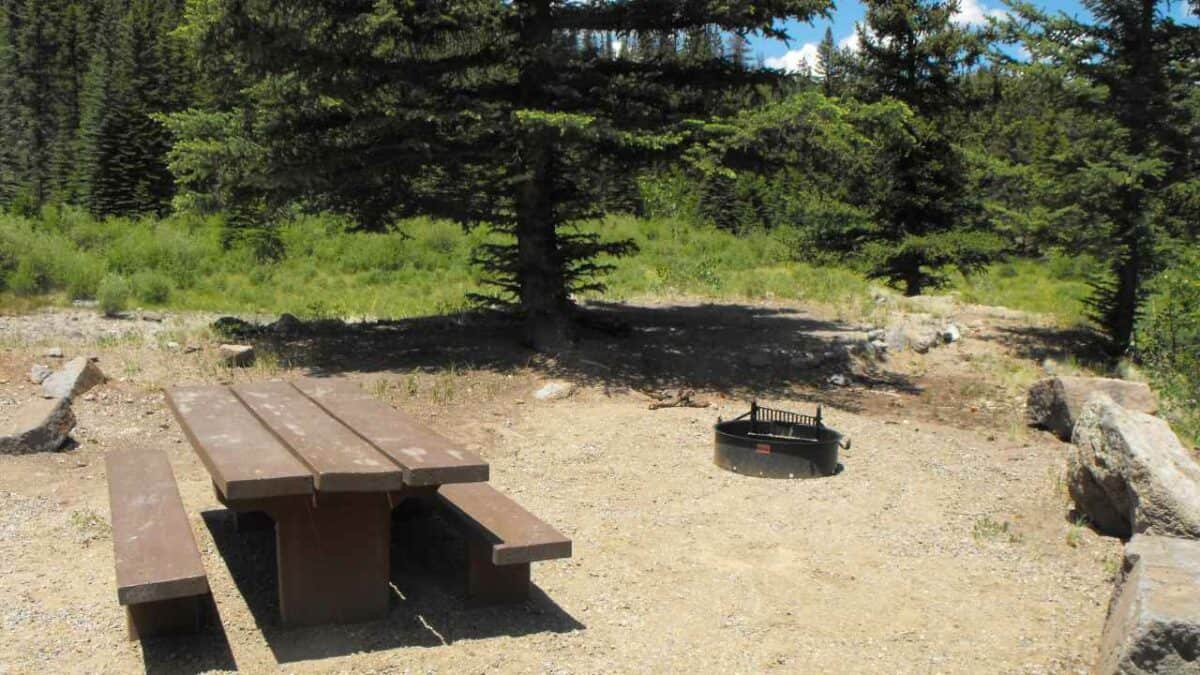
- Crowds: Busy
- Water: No
- Restrooms: Yes
- Distance to Buena Vista: 17 miles
- Map
The Clear Creek Reservoir is not the closest camping area to Buena Vista, but it’s undoubtedly worth the drive. It has vault toilets and plenty of room for RVs. If you prefer a bit more solitude, there are also a few secluded campsites nearby. In addition to awesome fishing and hiking opportunities, there is also a cool ghost town nearby.
The terrain is a bit rough, but most passenger vehicles should be able to handle it. Just be mindful of the signs. Some of the land in the area is private property.
Brown’s Creek Trail
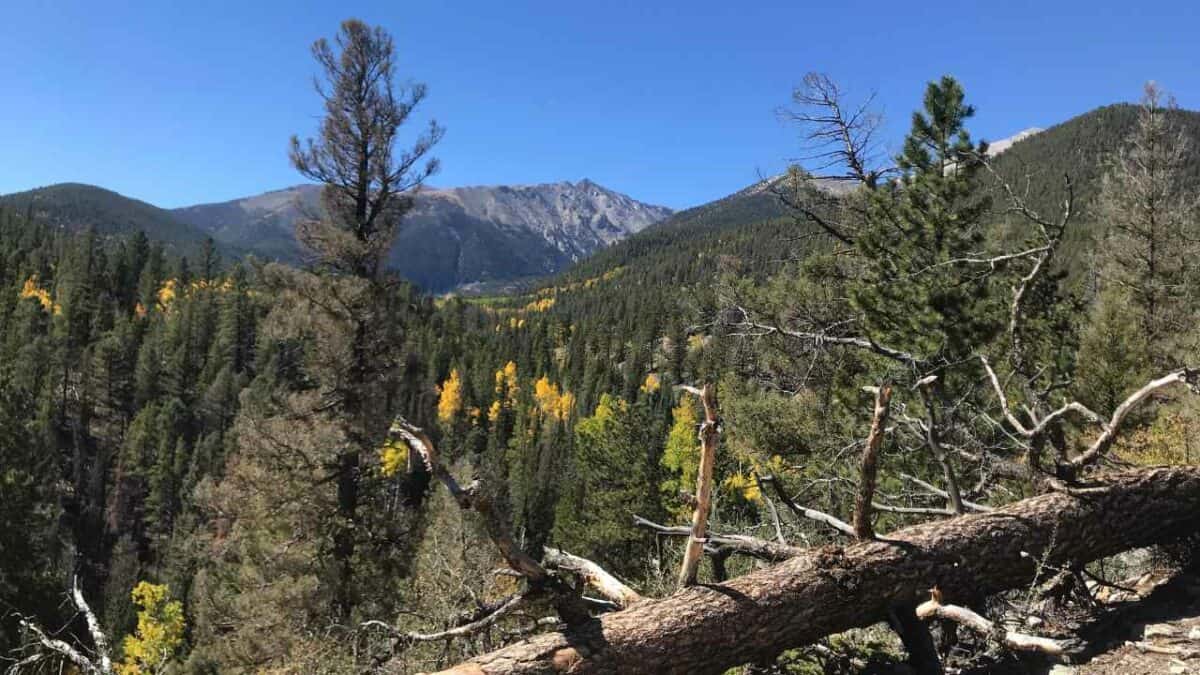
- Crowds: Busy
- Water: No
- Restrooms: Yes
- Distance to Buena Vista: 16 miles
- Map
Featuring waterfalls, pine forests, and wide open views, the Brown’s Creek Trail is one of the most beautiful hikes near Buena Vista. What is more, there are plenty of opportunities for dispersed camping right next to the trail. There’s no better way to fully immerse yourself in this incredible landscape.
There’s a well-maintained dirt road leading to the trail, so you can bring just about any passenger vehicle here. If you have a larger rig, there are a few good options just before the trail. These are a bit less scenic, but very campsite.
There is no potable water, but there are restrooms at the trailhead.
Fourmile Travel Management Area
- Crowds: Busy
- Water: No
- Restrooms: No
- Distance to Buena Vista: Varies
- Map
Fourmile TMA is made up of 100,000 acres of both USFS and BLM-managed lands. There is a wide variety of dispersed campgrounds throughout the whole area. Some of the best ones include Shield’s Gulch and Dorman’s Delight.
Most roads here are passable for most vehicles, but there are some that can only be accessed by 4WD vehicles, so make sure to look closely at a map of the area ahead of time.
Some parts of the Fourmile Travel Management Area can get crowded, but you will find peace and quiet if you’re willing to search for a bit.
For those seeking a change of scenery, dispersed camping near Fort Collins offers a refreshing alternative with its unique landscapes and untouched beauty. Just like in Fourmile TMA, you can find secluded spots that promise serenity away from the crowds. It’s a delightful experience for those who love to explore and camp in Colorado’s diverse terrains.
Blue Mesa Reservoir
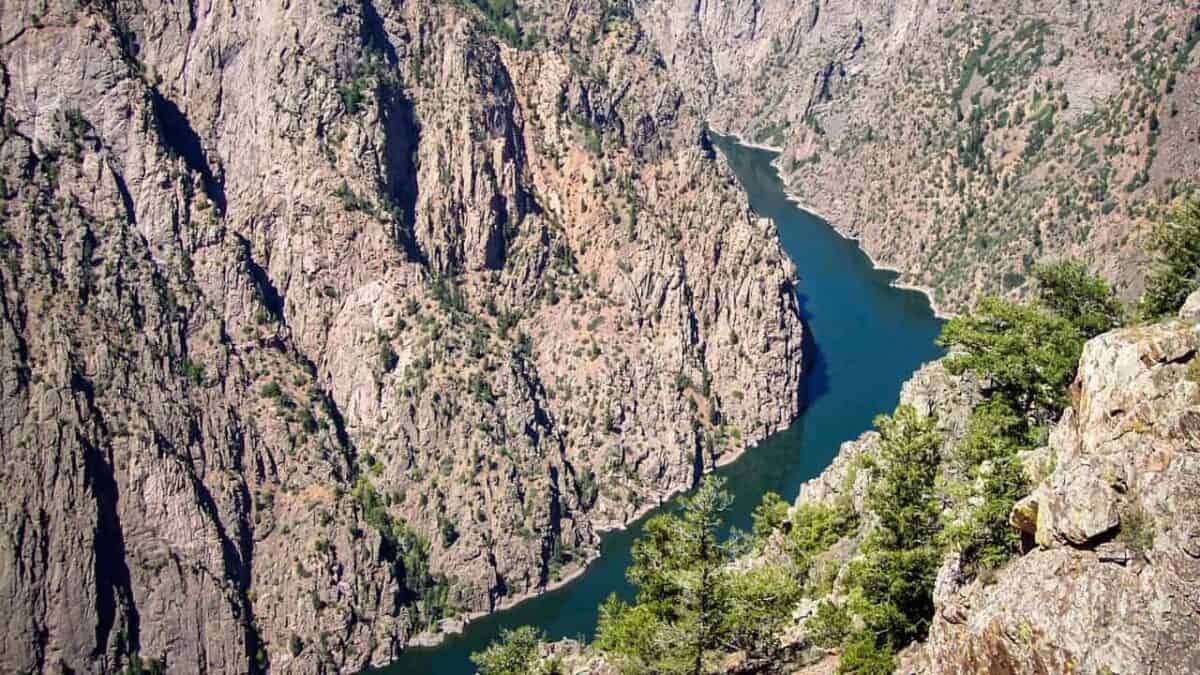
Part of the Curecanti National Recreation Area, the Blue Mesa Reservoir is a great destination for campers who also love water sports, rock climbing, and ATV trails. It is located just ten minutes west of Gunnison.
The Blue Mesa Reservoir is surrounded by BLM and US Forest Service lands, so it has no shortage of dispersed camping options. Some of the best campsites near Blue Mesa Reservoir include:
Red Creek Road Campground
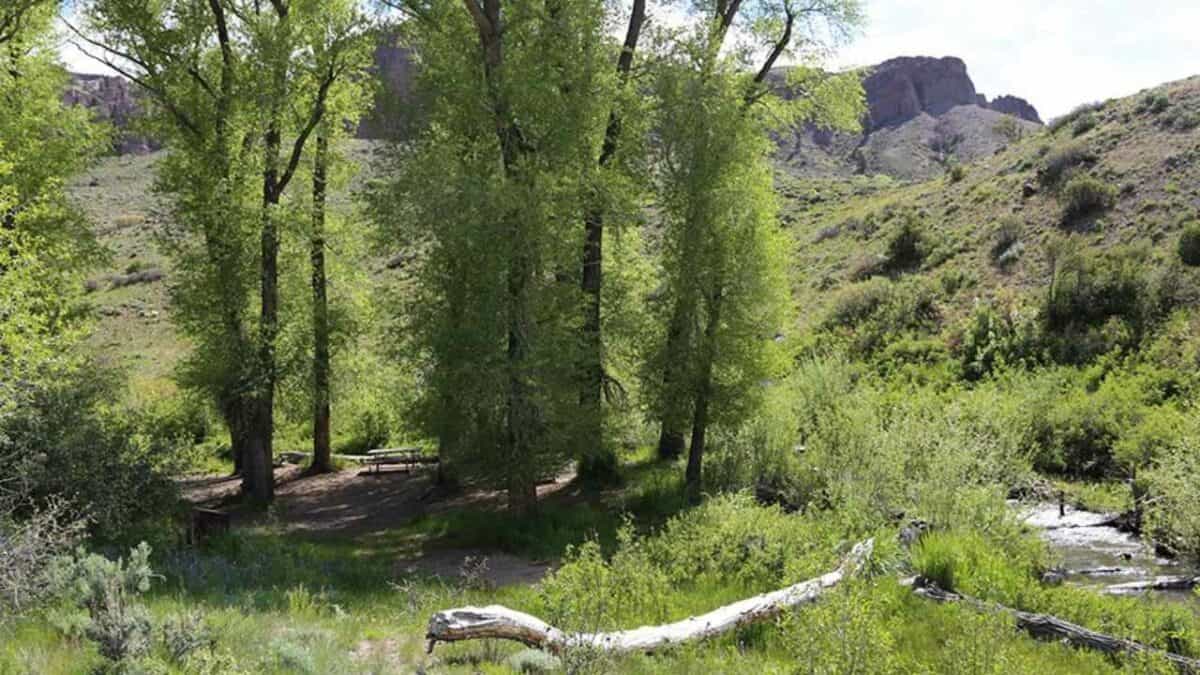
This campaign area is located on the north side of Blue Mesa Reservoir. It intersects with highway 50. Simply follow the road north until you get to the US Forest Service gate. As the road weaves its way through the National Forest, you will come across several dispersed campsites that make up the Red Creek Road camping area.
Hartman Rocks
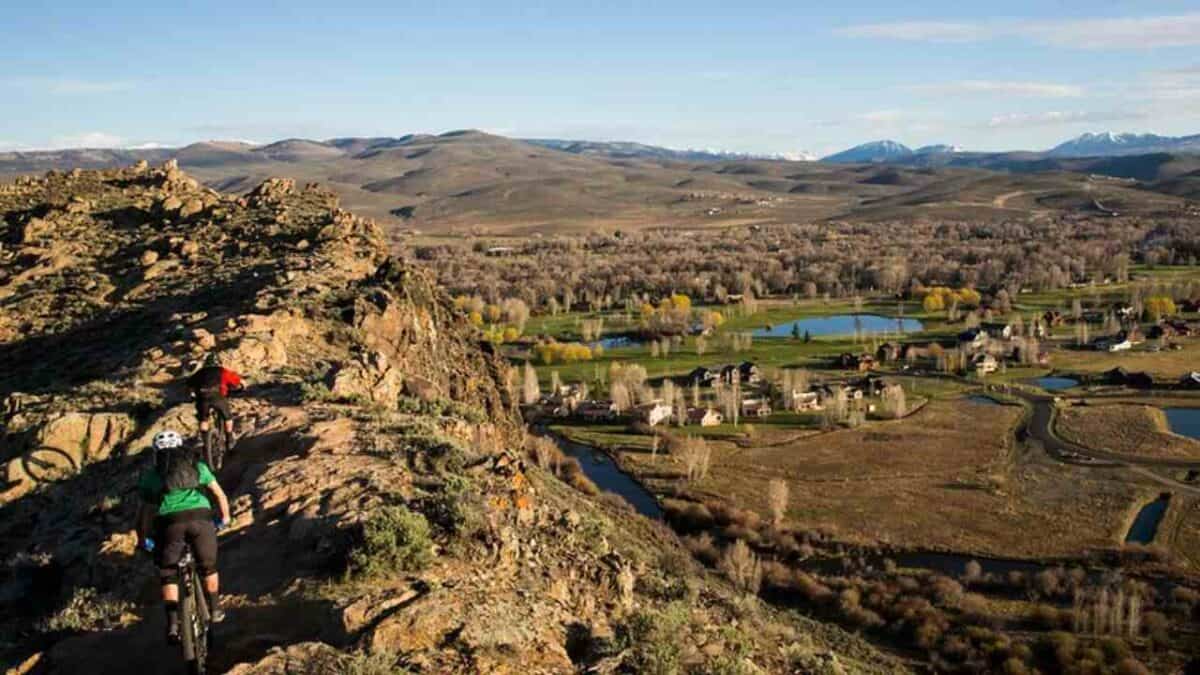
The Harman Rocks area is very popular with hikers and bikers as well as campers. It is located between the Blue Mesa Reservoir and Gunnison.
Soap Creek Road
You can find a few dispersed camping areas along Soap Creek Road, on the northern shore of Blue Mesa Reservoir. You also have the option at the developed Soap Creek Campground that’s a few miles down the road. It is more accommodating to care campers than the free campsite.
Great Sand Dunes National Park
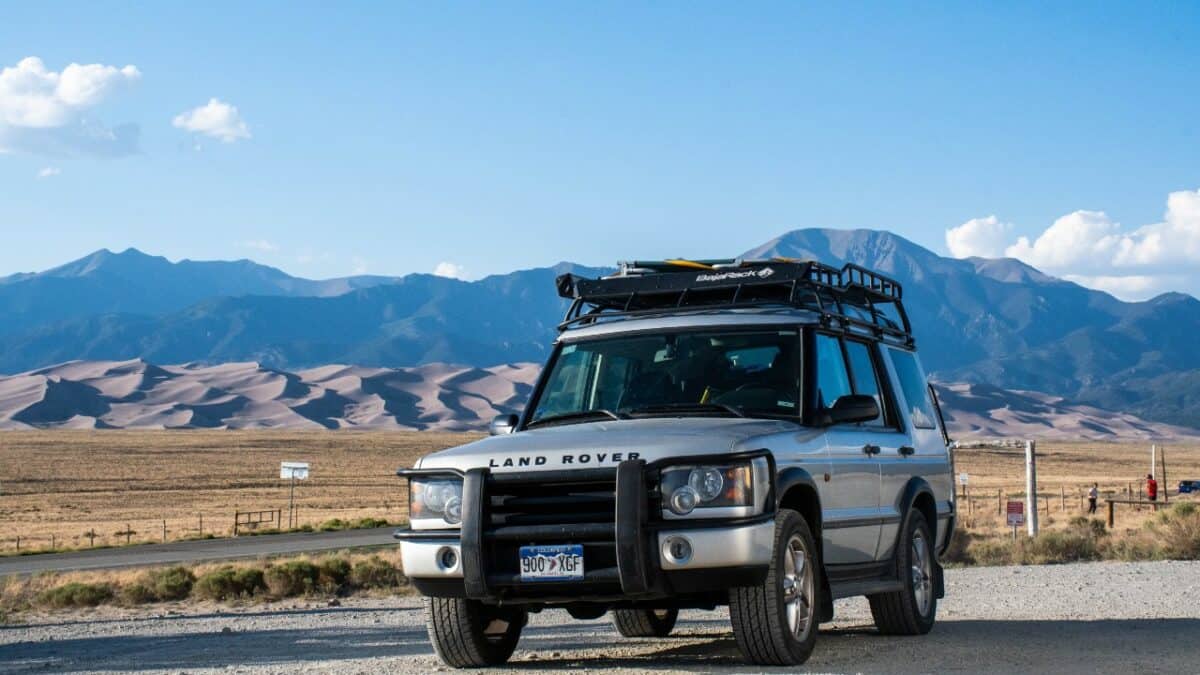
Sand is probably the last thing that comes to mind when you’re thinking about camping in Colorado, but rest assured that the land full of snowy mountains and lush forests also has sand. In fact, it’s home to some of the tallest dunes in North America. You can roam around the Great Sand Dunes for hours, sinking in deeper with each step and still barely reach past the edge of the dunes.
You may even stumble upon one of Colorado’s elusive beaches if you come at the right time of year. And, of course, the best way to visit the Sand Dunes National Park is to camp as close to it as possible. Here are a few recommendations where you can set up camp:
Medano Pass Campsites
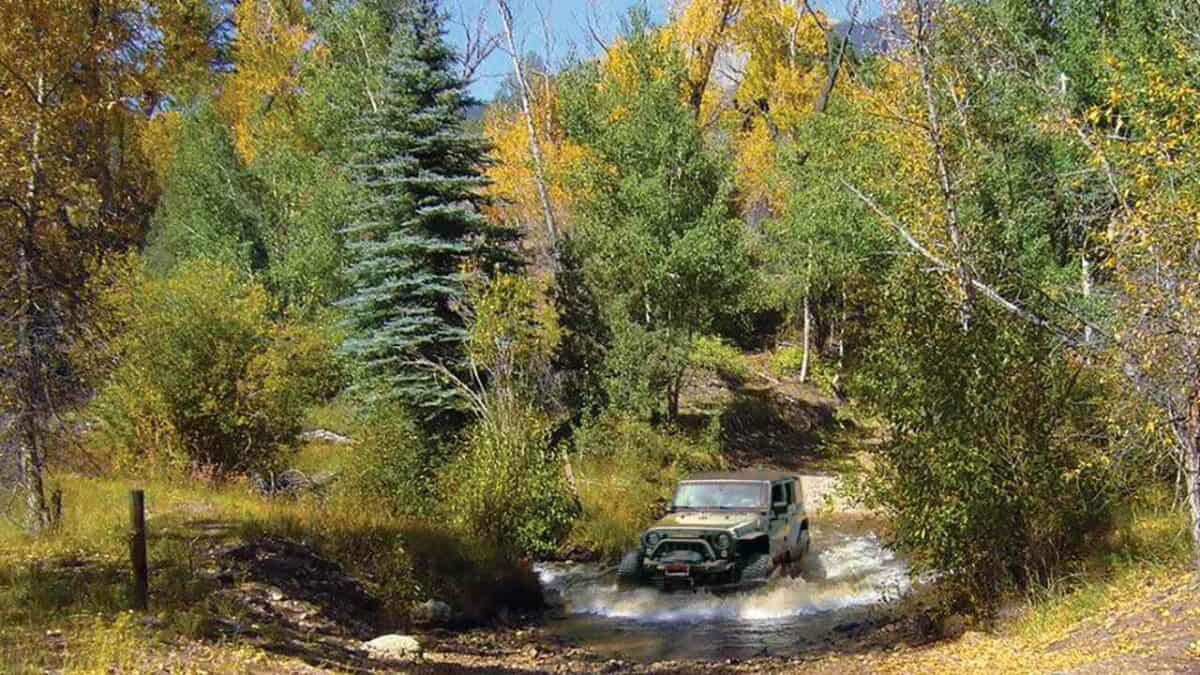
- Crowds: Busy
- Water: No
- Restrooms: No
The Medano Pass camping area is a series of twenty-something campsites located inside the national park itself. This camping area is located northeast of the sand dunes, about 6 miles away from the visitor center. This is the only free dispersed campground within the boundaries of the park.
San Luis Lakes State Wildlife Area
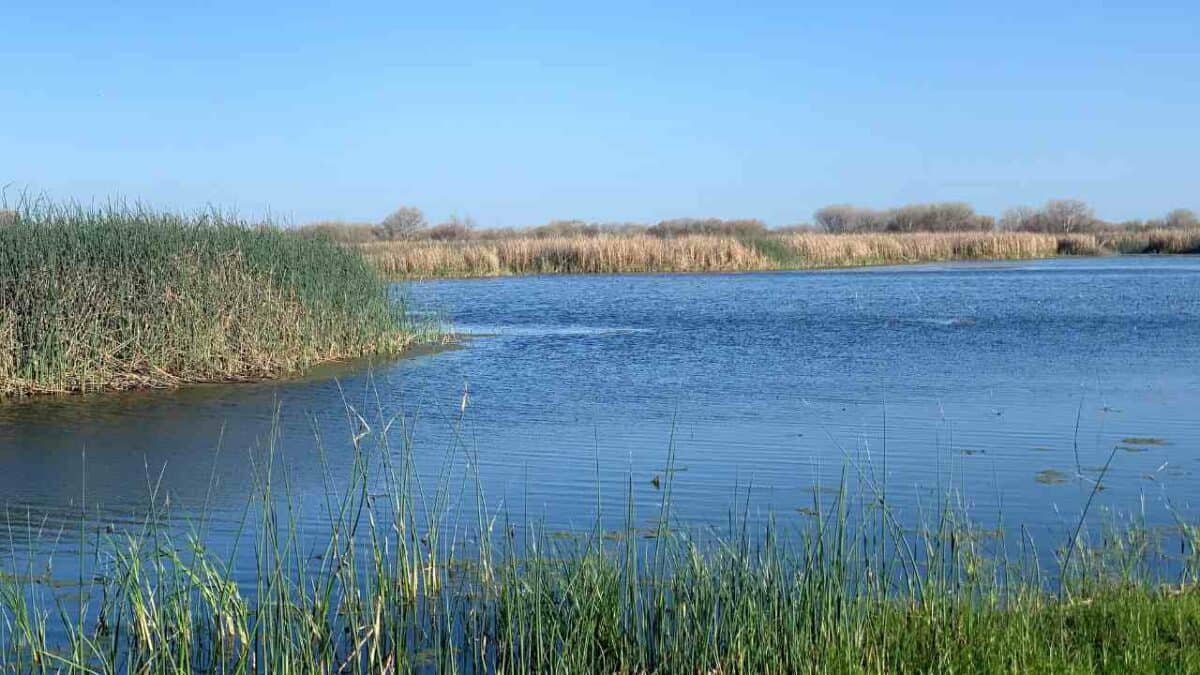
- Crowds: Busy
- Water: Yes
- Restrooms: Yes
In terms of facilities and amenities, San Luis Lakes State Wildlife Area is one of the best dispersed camping areas in the state, if not the whole country. It’s a free, first-come, first-served campground that offers water hookups, electrical hookups, and a dump station.
However, there is one catch: you have to purchase either a hunting or a fishing license from Colorado Parks & Wildlife if you want to stay here. One day fishing license costs $14.5 and an additional day costs $7. An annual license costs only $35 and teens younger than 16 don’t need one at all.
Sacred White Shell Mountain Campgrounds
- Crowds: No
- Water: No
- Restrooms: No
- Map
If you take the State Highway 150 to the National Park, you will see the Sacred White Shell Mountain Dispersed Campgrounds as you get close to the Sand Dunes. The landscape here is gorgeous but there are no facilities here. Make sure to bring plenty of water and remember that you will need to deal with your waste at this site. For more information, check out our ultimate guide to camping in Great Sand Dunes National Park.
Rocky Mountain National Park
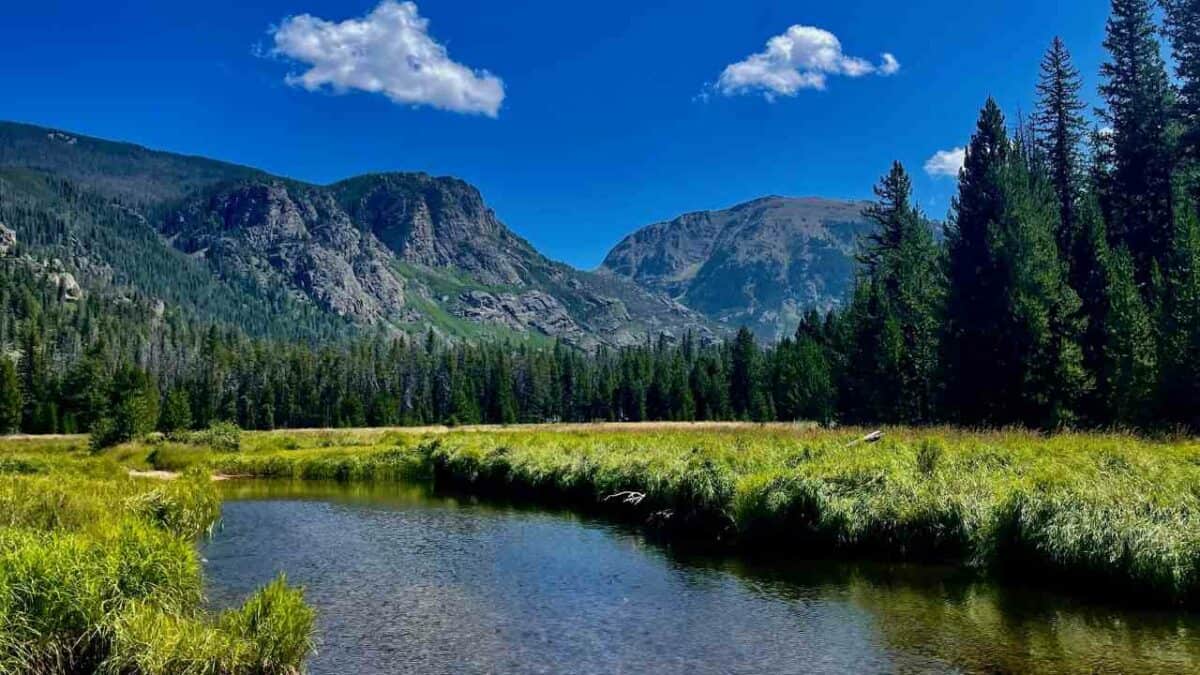
Comprised of meandering streams, alpine meadows, and 14,000 ft peaks, the Rocky Mountain National Park is one of the most stunning natural environments in the country. The National Park and its surrounding areas offer a wide variety of camping options; there is something for every type of camper. Some of my favorite campsites near Rocky Mountain National Park are:
Jonny Park Road
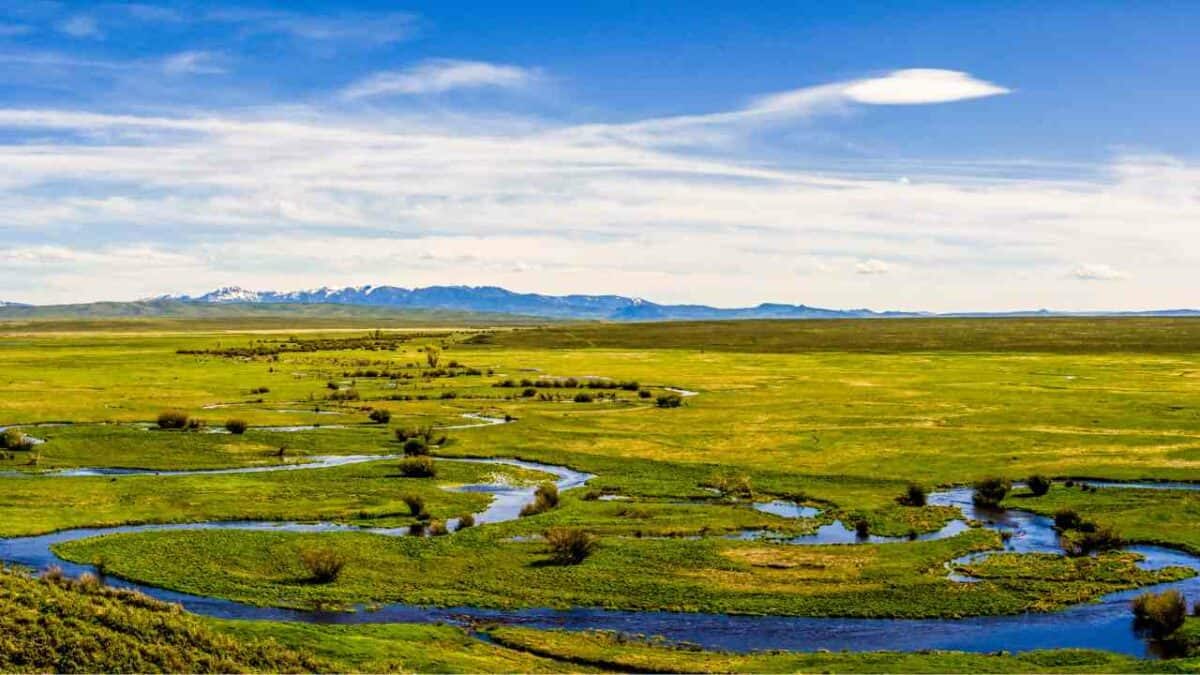
The Johnny Park dispersed camping area is a great option as it’s very close to the road. It’s located on the east side of RMNP and is technically a part of the Roosevelt National Forest. However, it offers easy access to the National Park.
Stillwater Pass Dispersed Camping
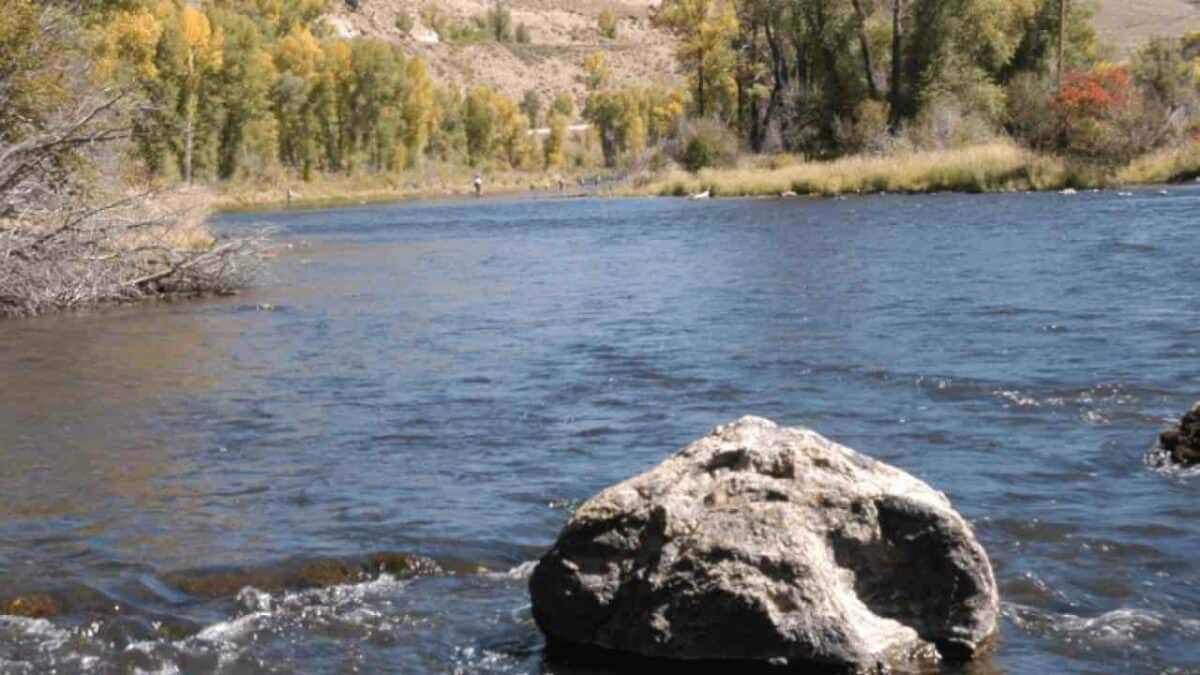
If you are on the west side of the park, Stillwater Pass is your only option for free dispersed camping. It has plenty of room, toilets, and even an information kiosk. So, with a dispersed campground like this one, you don’t really need to look elsewhere. However, it’s best to get here as early as possible as it is very popular.
Pole Hill Road
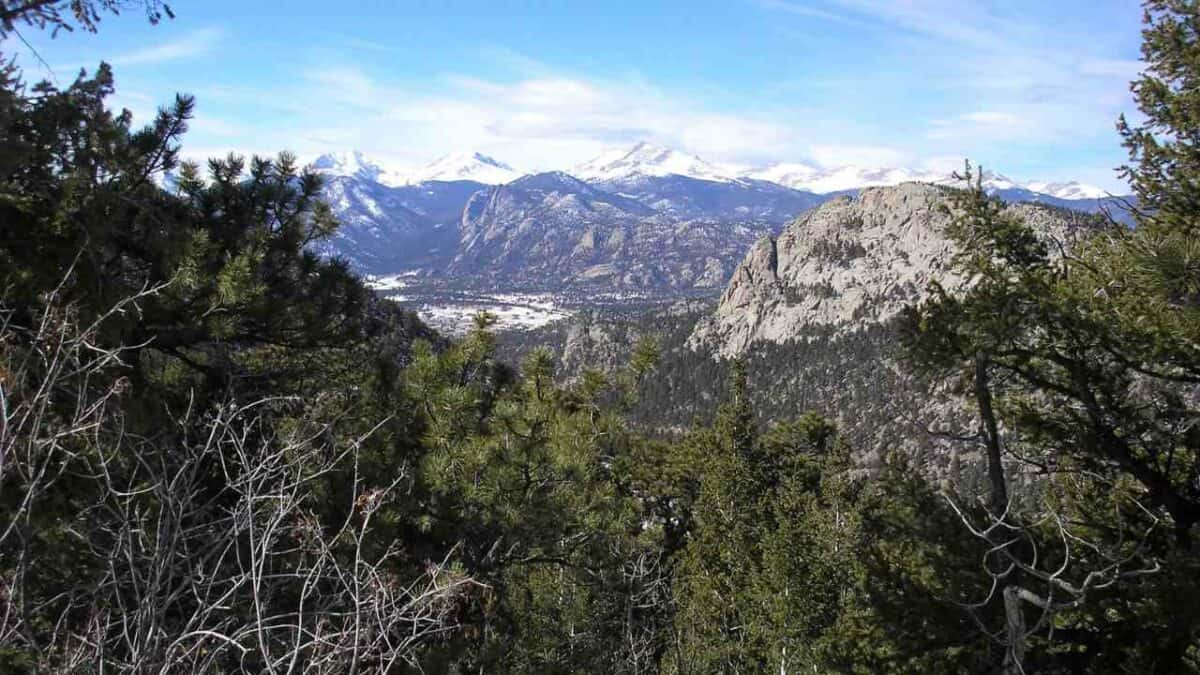
The Pole Hill Road is a secluded dispersed camping area that is only accessible from the west side via country road 36. Moreover, you need a 4×4 vehicle to get here.
It sits at around 8600 feet of elevation and has no services. So, it’s a large campsite next to an untravelled road. If you are a self-sufficient camper that has the right gear and vehicle, Pole Hill Road is a great place to get in touch with nature – far away from crowds and noise.
Telluride
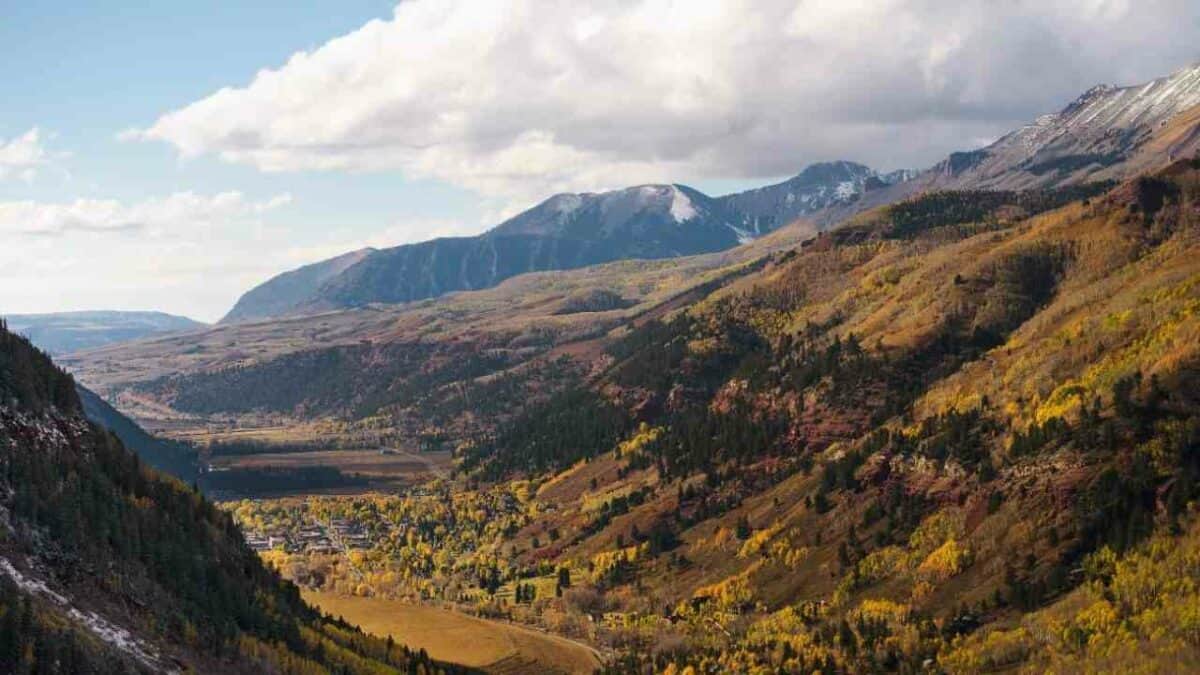
Even though it’s one of Colorado’s most secluded towns, people flock here throughout the warmer spring, summer, and fall months to set up camp. Tucked away in a box Canyon of the San Juan Mountains, the beloved town of Telluride is surrounded by endless outdoor recreation.
Telluride is located on the San Juan Skyway, along CO-145, a national scenic byway that loops Telluride, Cortez, Durango, Silverton, Ouray, and Ridgway together. Telluride is also linked to Mountain Village via a gondola ride.
This small mountain town of 2,500 residents is quite a happening spot each summer, with a handful of festivals taking place here. Many campers hop into town in the evening to enjoy a comedy festival, music festival, wine festival, or whatever is going on at the moment.
You can even pitch a tent in town at the Town Park. It’s not a dispersed campsite, and you have to make reservations online, but it’s within walking distance of all the major attractions, so it’s well worth it.
It offers easy access to both San Juan and Uncompahgre National Forests, which in turn offer a wide variety of dispersed camping options. Here are a couple of great dispersed camping spots near Telluride:
Alta Lakes Camping Area
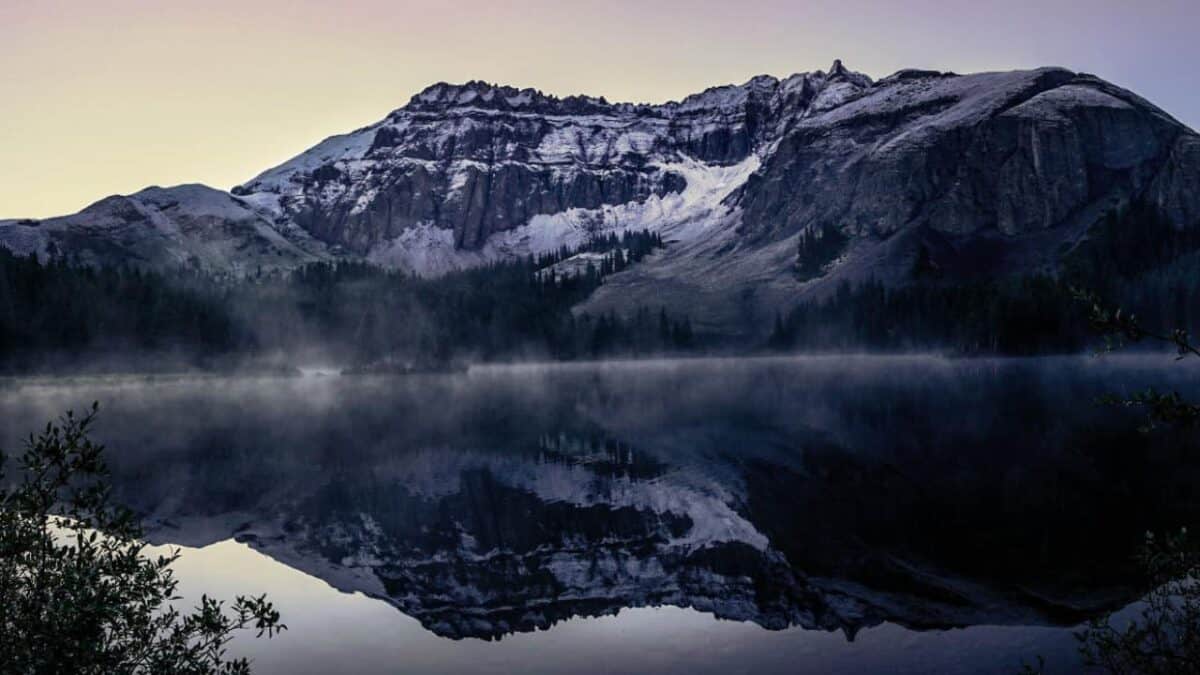
- Crowds: Busy
- Water: No
- Restrooms: Yes
- Distance to Telluride: 14 miles
- Map
Pitching a tent at Alta lakes and spending the night under the stars is an unforgettable experience. This series of small, alpine lakes and the surrounding area live up to their reputation as one of the most beautiful places in the Centennial State.
The campsites allow for privacy and spectacular alpine views as they are pretty well spaced out. Aside from the 20 main campsites, there are a few additional sites along the road up to the lakes. Alta Lakes is just a one-hour drive from Telluride and you will see a handful of historic buildings on your way up.
Priest Lake
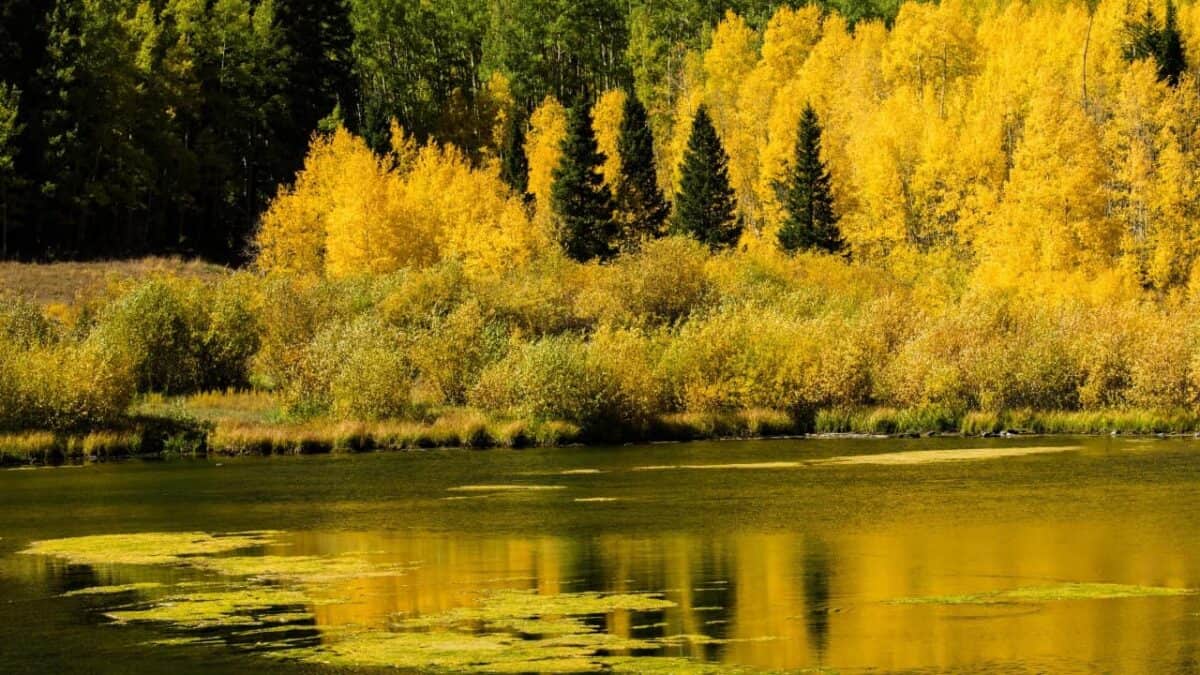
- Crowds: Busy
- Water: No
- Restrooms: Yes
- Distance to Telluride: 14 miles
- Map
Priest Lake, a scenic alpine pond and a popular fishing spot, is just half an hour from Telluride. This small and beautiful dispersed camping area offers a handful of individual campsites, some of which are walk-in. The walk-in campsites require a bit more effort to reach, but they offer a bit more privacy.
When it comes to outdoor activities, bikers, hikers, and horseback riders will definitely appreciate the Galloping Goose Trail. However, keep in mind that trailers are not permitted in the camping area. Try camping at Turquoise Lake if you have a trailer and want to be beside a lake.
Colorado Springs
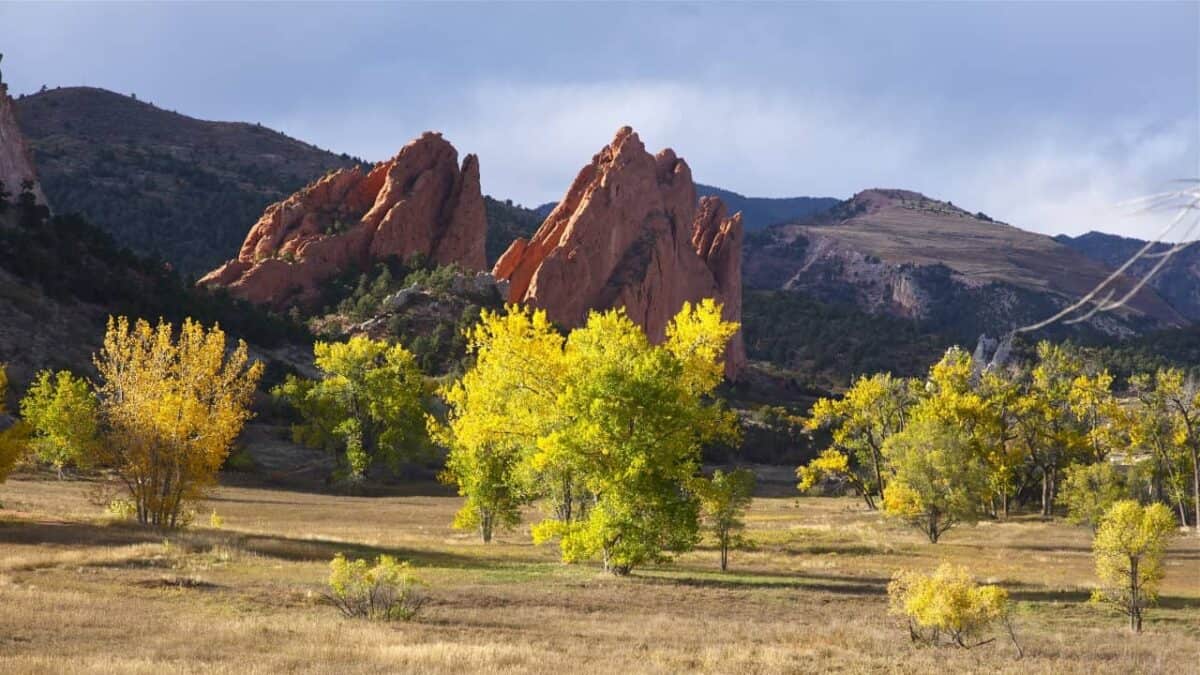
There are many dispersed camping areas near Colorado Springs and most of them are just a stone’s throw away from downtown. Colorado Springs also has a longer camping season than the rest of the state as it sits at an elevation of just 6,000 feet. Most campsites are located in the foothills surrounding the city. Some of my favorite free dispersed camping areas near Colorado Springs include:
Mount Herman Road Camping Area
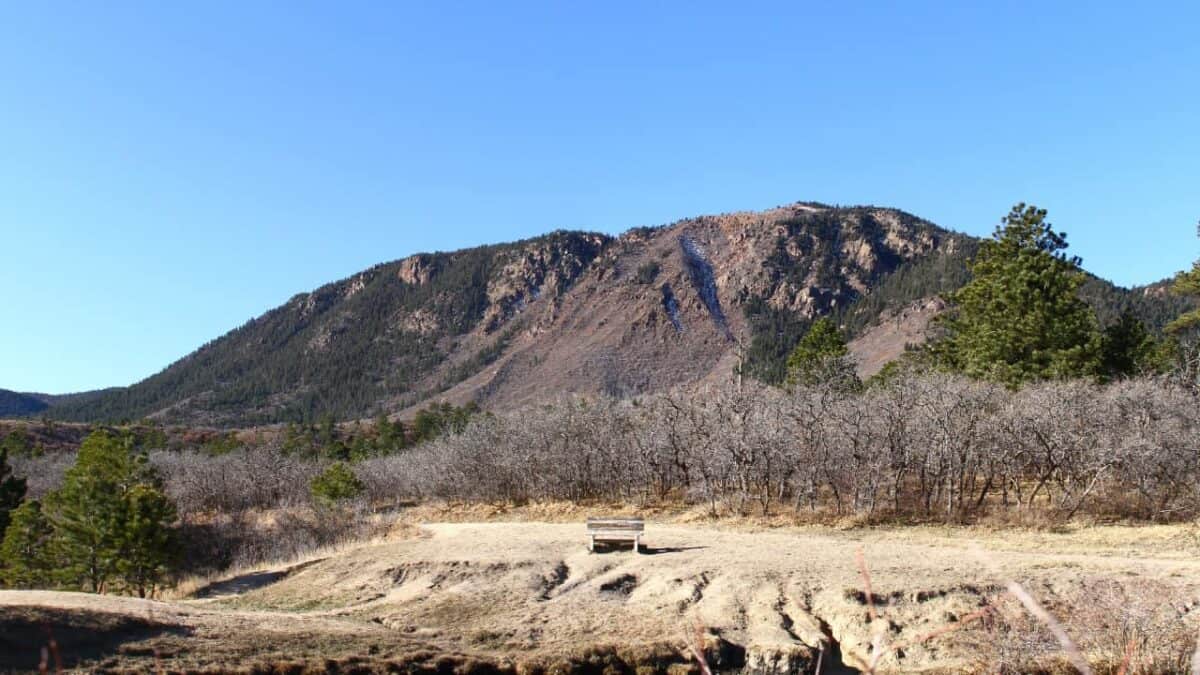
- Crowds: Moderate
- Water: No
- Restrooms: No
- Distance to Colorado Springs: 26 miles
- Map
Mount Herman Road is perfectly located for a hike up Mt. Herman. This dispersed camping area offers beautiful views of the Front Range and Pikes Peak. It’s just a 45-minute drive from Colorado Springs. However, the Mount Herman dispersed Road camping area is not recommended for trailers and RVs.
Seven Lakes Road
- Crowds: Moderate
- Water: No
- Restrooms: No
- Distance to Colorado Springs: 52 miles
- Map
Sitting in the shadow of Pikes Peak, in the vast wilderness west of Colorado Springs, the Seven Lakes Road offers plenty of dispersed camping opportunities. It’s an hour and a half drive from the town, but it’s undoubtedly worth it.
The area is moderately crowded, and if you are willing to make the trek to the Forest Service Road 376, you will find even more peaceful campsites. The road up to this campsite is surrounded with majestic scenery, including the Cathedral park Climbing area.
The area surrounding Seven Lakes is popular for off-roading, so it’s best to bring a 4×4 vehicle.
Estes Park
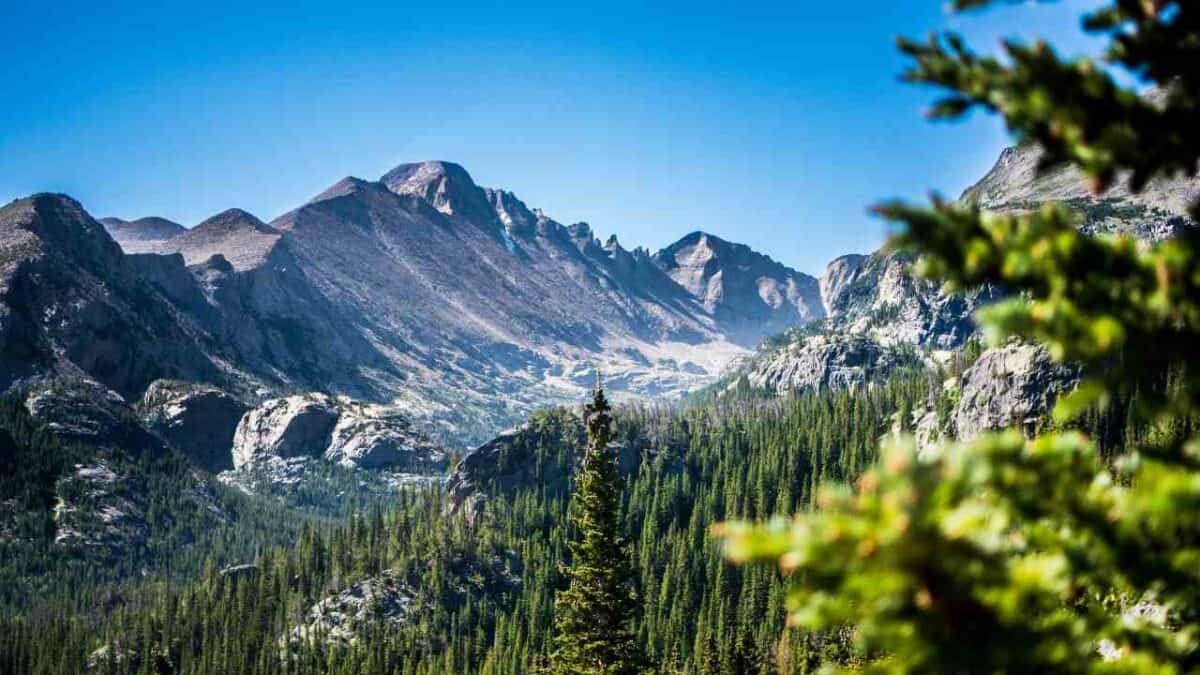
If you are planning the ultimate rocky mountain camping trip, and dare to sleep on a portaledge on the side of a cliff, camping at one of the backcountry dispersed campsites surrounding Estes Park may be the best option for you.
The camping sites in the surrounding Rosevelt National Forest take a bit of an effort to reach, but it’s well worth it. Here are a few recommendations:
Parachute Hill Road
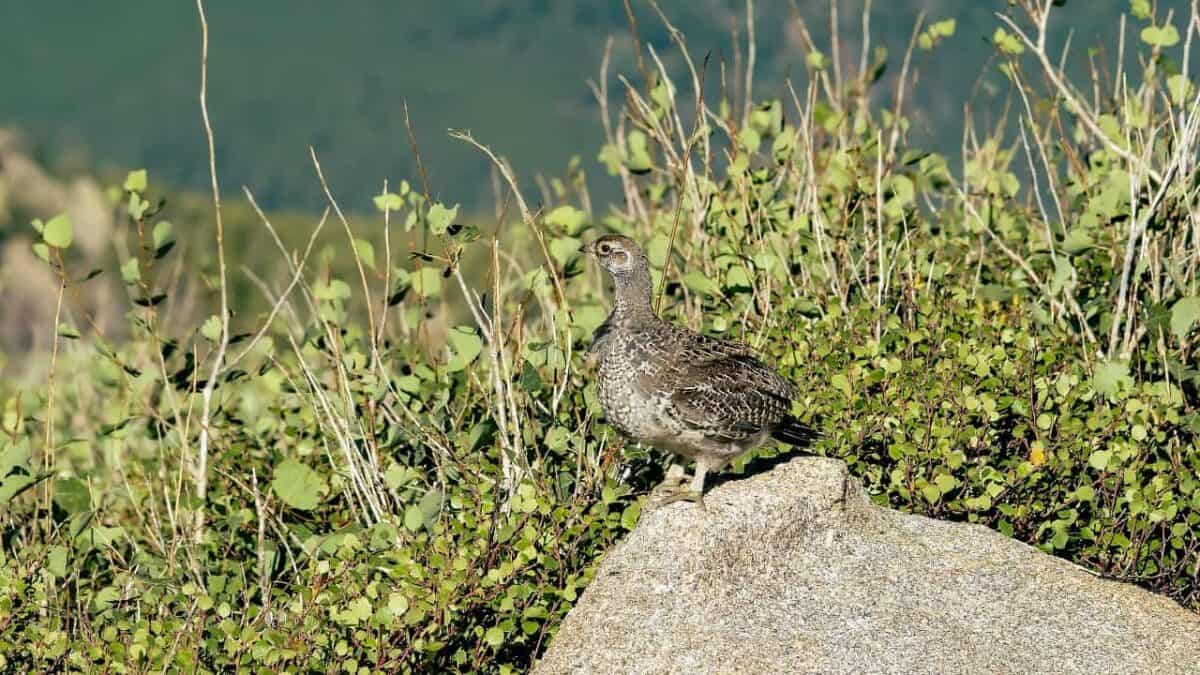
- Crowds: Moderate
- Water: No
- Restrooms: No
- Distance to Estes Park: 15 miles
- Map
Parachute Hill is a short and steep Forest Service road with a handful of great roadside campsites. Moreover, they are in close proximity to Estes Park.
The further back you head, the better scenery you will see. The road is very popular with campers, but it’s seldom overcrowded. This camping area is great if you want to explore the National Park from the Longs Peak Trailhead.
Button Rock Road
- Crowds: Busy
- Water: No
- Restrooms: No
- Distance to Estates Park: 14 miles
- Map
Button Rock road is comprised of several campsites located next to the Coulson Gulch Trailhead. To best way to get there is simply to drive along Jonny Park Road from the west. The road can get quite rocky so it’s best to bring a 4WD vehicle. On summer weekends, it’s best to arrive easily as there are only a handful of sites.
If Button Rock road is too crowded or you fancy a change of scenery, consider the dispersed camping near Glenwood Springs. It offers a unique and tranquil experience, blending wilderness with the convenience of being close to town.
Beaver Reservoir Road Dispersed Camping
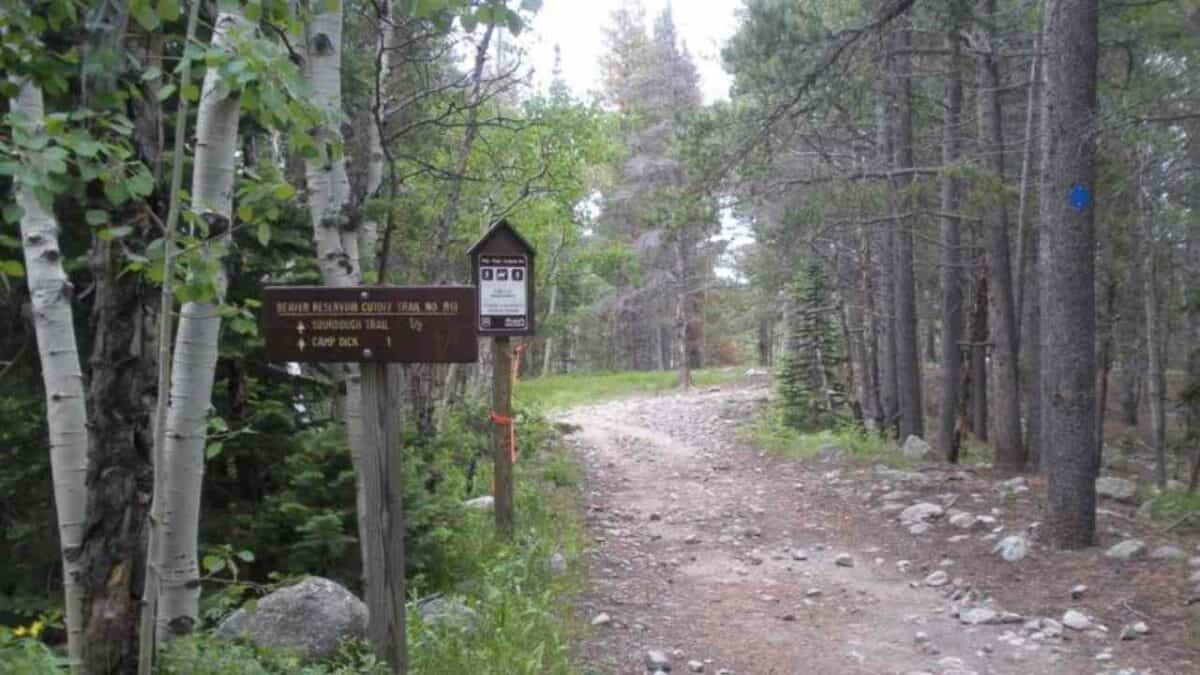
- Crowds: Moderate
- Water: No
- Restrooms: No
- Distance to Estates Park: 28 miles
- Map
If you want to explore both Estates Park and the Indian Peak Wilderness, the Beaver Reservoir Road dispersed camping area is a great choice. It’s close to the highway and the road is suitable for most vehicles. The only downside is that there aren’t any facilities here and you can’t pull water from the reservoir as it’s private property.
Red Feather Lakes
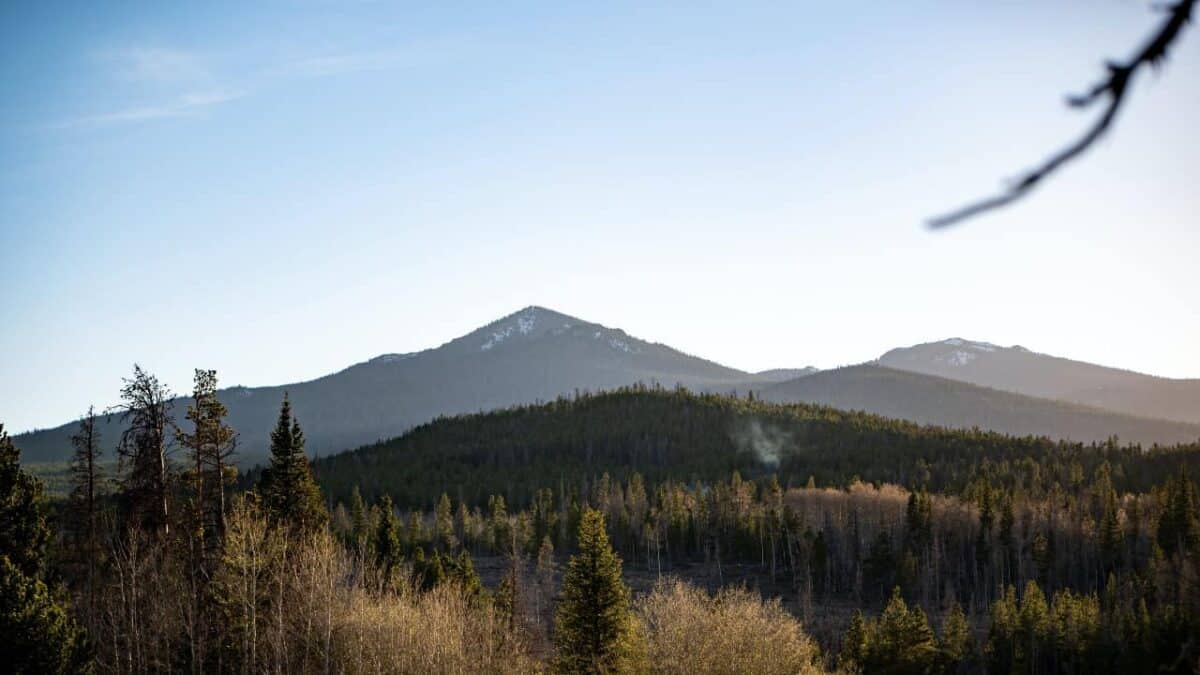
Like Estates Park, Red Feather Lakes is surrounded by 600,000 acres of the Roosevelt National Forrest. It’s one of the best dispersed camping areas near Denver. Sitting on the edge of the mesmerizing Cache la Poudre River, this recreational gem is rife with vast forests, stunning blue skies, numerous lakes, and countless camping options.
Some lakes even have campsites near the edge. However, there is some private property in the area as well so it’s important to look out for signs and fences. Here are some of the best dispersed camping sites near Red Feather Lakes:
Lost Lake Dispersed Camping Area
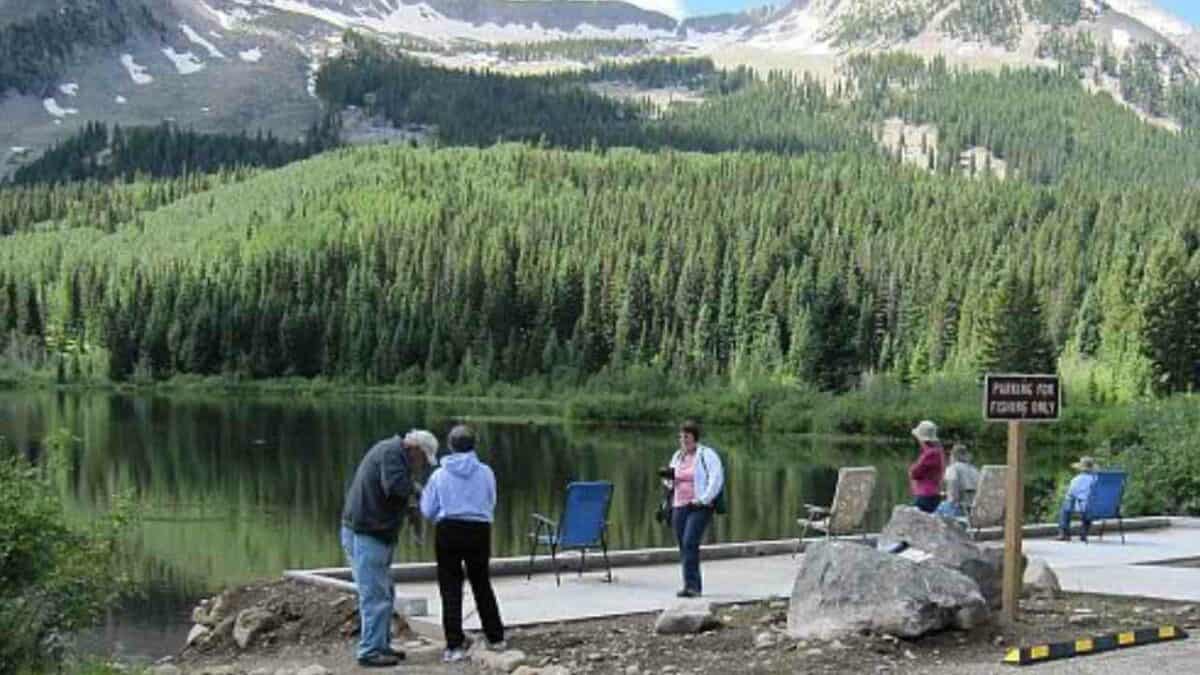
- Crowds: Moderate
- Water: No
- Restrooms: No
- Map
If you have a hearty sense of adventure, and a high-clearance vehicle, you will have a great time at the Lost Lake dispersed camping area. While it’s more of a pond than a proper lake, the scenery around Lost Lake is spectacular and the hiking trail around the lake is lovely.
It’s seldom crowded due to the distance from town and the rugged road so you will have plenty of space for yourself. Keep in mind that camping is not allowed within 100 ft of the lake.
Pingree Road
- Crowds: Busy
- Water: No
- Restrooms: No
- Map
If you are looking for a quick getaway from the town, the Pingree road dispersed camping area is just south of Red Feather Lakes, close to the Poudre River. You can pitch a tent as soon as you turn off Highway 12. Within the first half mile, there are a few large camping areas to choose from.
Due to its accessibility, the Pingree Road camping area is very popular among dispersed hikers. But if you would like more privacy, simply continue driving up Pingree Road.
You may also want to check out our guide to dispersed camping near Leadville Colorado and our guide to Pines Peak camping.
When to Go Camping in Colorado
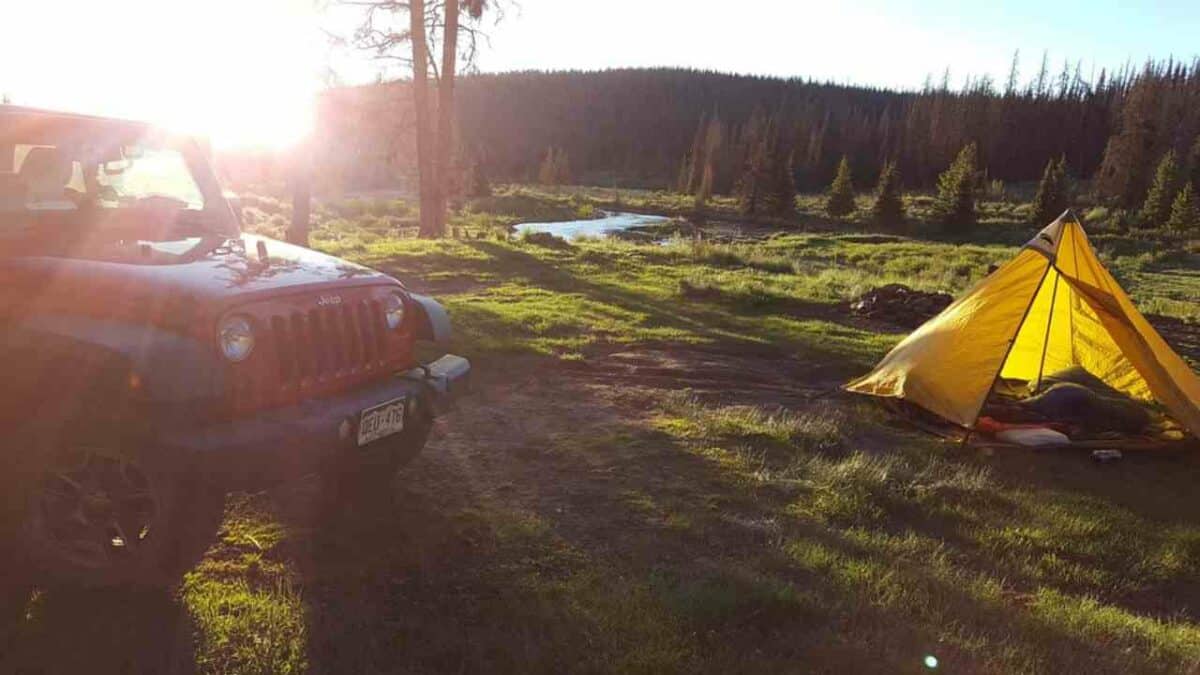
The Cenntenial State is undoubtedly a place of four distinct seasons. Locals often joke that you can experience all four seasons in one day. So it’s always good to bring waterproof gear with you.
You can camp year-round in Colorado if you are really experienced. But I know that very few people have the necessary prowess for winter camping. You shouldn’t do it if you haven’t done that before.
If you are relatively new to camping, plan your camping adventure between mid-June and mid-September. This is when the weather is dry and the temperatures are optimal.
The peaks and campsites are often covered with snow well through May due to Colorado’s high altitude. In fact, the camping season in Colorado starts on Memorial Day weekend. However, desert areas such as Grand Junction can be a great place to camp from March through May (but the same areas can be too hot in summer).
Labor Day weekend is also a great time to go dispersed camping in Colorado. As you push into mid-September, be wary of snow.
Consider your shade options. If it’s summer, it’s best to pitch your tent under a tree. It will give you a lovely morning shade when you are preparing breakfast.
If it’s spring on fall, your campsite should be facing east. The sun will hit your tent early in the morning, making it a bit cozier for that morning cup of coffee. Flurries can fly as early as late September. You’ll be in for a miserable camping trip if you aren’t prepared for the fluffy stuff.
If you have the necessary experience and the right gear, do know that October is a great time for camping in Colorado. The sight of the aspen leaves changing to a stunning gold color is definitely worth seeing.
And, no matter the season, you should always avoid camping on an incline. Camping is much less fun when you are rolling around all night, or worse, sleeping while all the blood is rushing to your head.
What Are the Rules for Colorado Dispersed Camping?
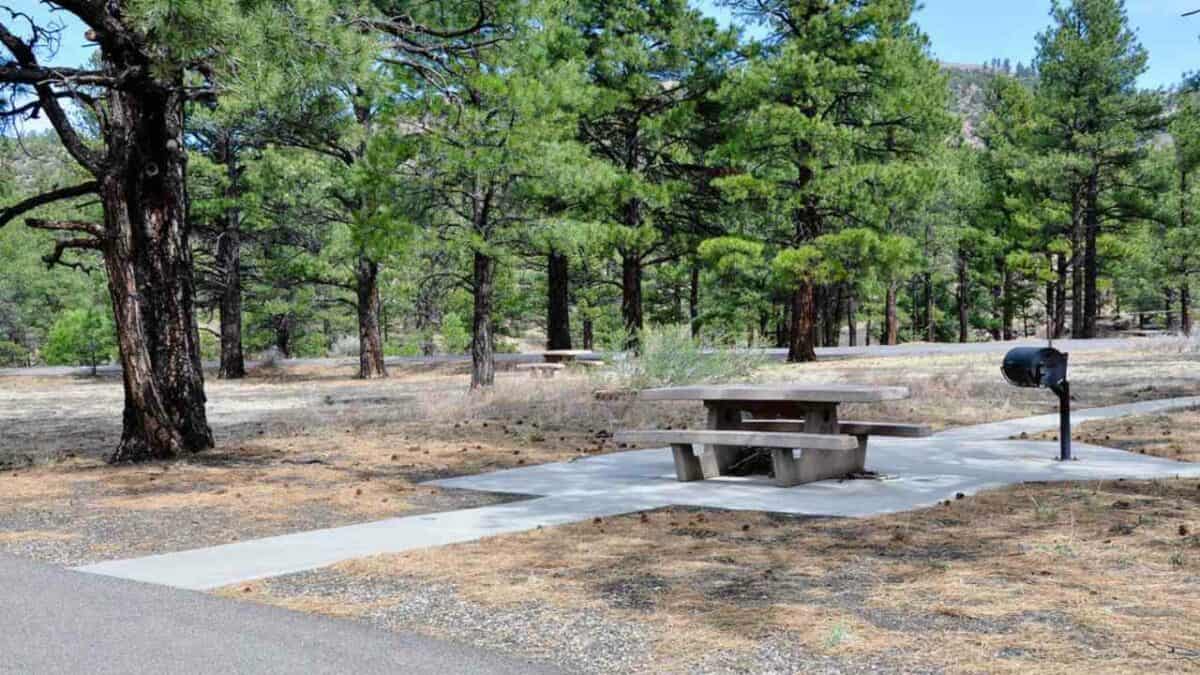
The lack of permits, reservations, and similar requirements is one of my favorite things about free camping in Colorado. But this doesn’t mean that there aren’t any rules roundabout free camping. Make sure to adhere to these rules outlined by the USFS when camping in the Centennial State.
- Keep your campsite small.
- Don’t camp in areas near developed campgrounds, picnic areas, and trailheads.
- Use existing campsites and fire rings when available.
- Don’t camp within 200 feet of a water source.
- Only light campfires where it’s permitted.
- Make sure to extinguish the campfire completely
- Pick a site without vegetation
- Don’t stay more than 14 days at the same spot within a 30-day period
- If possible, camp within 150 feet of roadways
- Don’t leave personal property (tents, RVs, etc.) unattended for more than 10 days
- Stick to the Leave No Trace Principles
Dispersed campsites don’t have a standard check-in and check-out time. Essentially, dispersed campsites are first come first served. This is important to keep in mind because popular dispersed camping areas can get really busy during weekends. If you want to find a great spot, make sure to go early. Even then, it’s a good idea to have a backup plan.
The average dispersed campsite in Colorado has a small clearing, big enough for one or two tents, and most of them have a small rock fire ring. Most dispersed campgrounds in Colorado are found, not made. And very few of them are listed online. The ones that are listed are almost always crowded.
When you find a general area where you would want to pitch a tent, use Google Maps to find roads that lead to it. Motor Vehicle Use Maps published by USFS can be very helpful when navigating forest service roads.
Some areas may be beautiful, but they might not be worth the hassle if they are very hard to access from the highway. Many of these roads are in poor condition so I recommend bringing a 4WD vehicle. If you prefer to keep things simple and easy, there are still many easily accessible campsites.
Do know that call service in the Coloradian wilderness is minimal best. Make sure to download offline maps before you head out.
While dispersed campsites are free, they often lack amenities. Some may have restrooms, showers, tables, and waste stations, but it’s best not to expect any of these and think about your needs in advance.
In general, dispersed campsites in Colorado are safe, private, and easy to find. They are often marked by signs on the forest land. Some highways even have signs that point to dispersed campsites in the area.
In the Centennial State, there’s a dispersed campsite for every type of outdoor enthusiast. Whether you are an unapologetic RV glamper or simply a cowboy camper, you will find what you are looking for. Just be on the lookout for signs denoting sensitive restoration areas and for areas that restrict motor vehicles.
Leave No Trace Principles
Following the Leave No Trace principles is one of the most important considerations when camping. By doing so, you will minimize your impact on the environment and ensure the area can be enjoyed by future campers. The 7 Leave No Trace principles are:
- Prepare and plan ahead: It’s good to have a general idea of where you would like to set up camp. Make sure you’re free camping in an area where it’s allowed.
- Properly dispose of waste: Don’t bury human waste near water sources. Ideally, you should use a portable toilet or carry it out. You should also pack out all of your trash.
- Leave what you find: Leave everything as it was when you arrived. Other than the trash, you shouldn’t take anything with you.
- Be considerate of other visitors: Don’t be loud, pack out your trash, and don’t do anything you wouldn’t want your camping neighbors to do.
- Camp on durable surfaces: Avoid creating new campsites and never camp on fragile ground.
- Minimize campfire impacts: Only start a campfire if it’s permitted and only use existing fire rings.
- Respect wildlife: Be aware of the area’s wildlife. Make sure to properly store food. Ideally, you should use bearproof containers
Where Is Free Dispersed Camping Allowed?
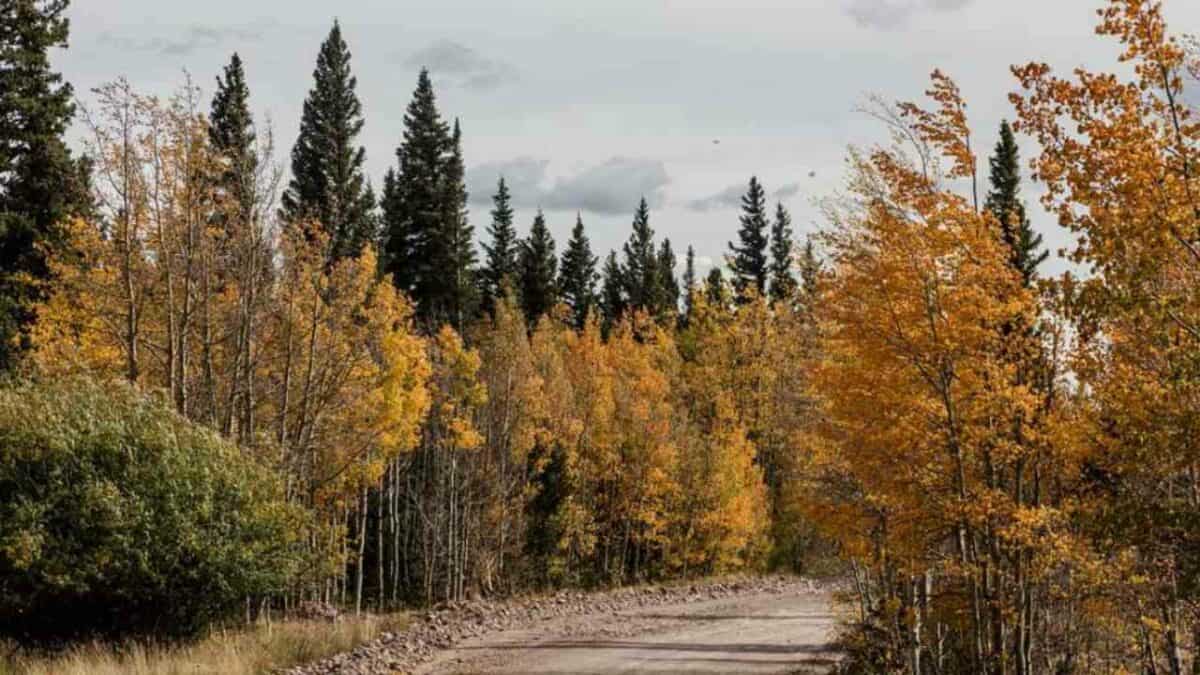
Several public agencies in Colorado allow everyone to camp freely on the land they control. The Bureau of Land Management (BLM) and United States Forest Service (USFS).
US Forest Service (USFS)
Managing millions of acres across 11 National Forests, the USFS offers you hundred of dispersed camping areas to choose from. You are free to pitch a tent practically anywhere within these national forests and they offer plenty of fun recreational opportunities.
These forests are always my first choice when it comes to dispersed camping in the US. Here is a list of all the USFS-managed National Forests in Colorado:
- Arapaho National Forest
- Gunnison National Forest
- Grand Mesa National Forest
- San Juan National Forest
- San Isabel National Forest
- Routt National Forest
- Roosvelt National Forest
- Pike National Forest
- White River National Forest
- Uncompahgre National Forest
- Rio Grande National Forest
If you need help locating these forests, check out the map below:
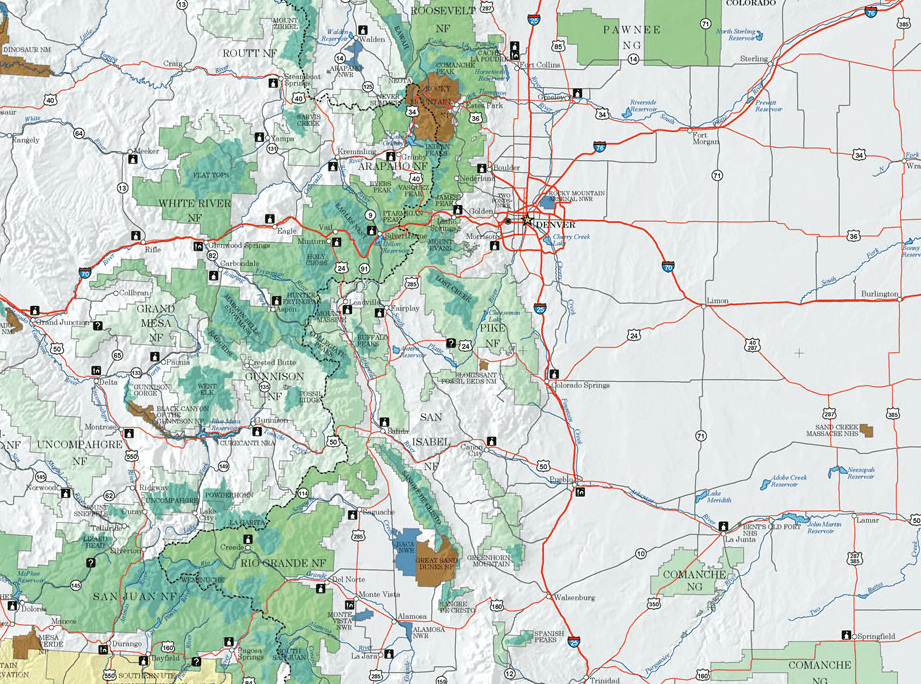
Moreover, all National Forests of Colorado are highlighted in green on Google maps. Still, it can be hard to tell where the boundary of a National Forest is relative to yourself. Simply ask a local park ranger; they can give you the best lay of the land.
Bureau of Land Management (BLM)
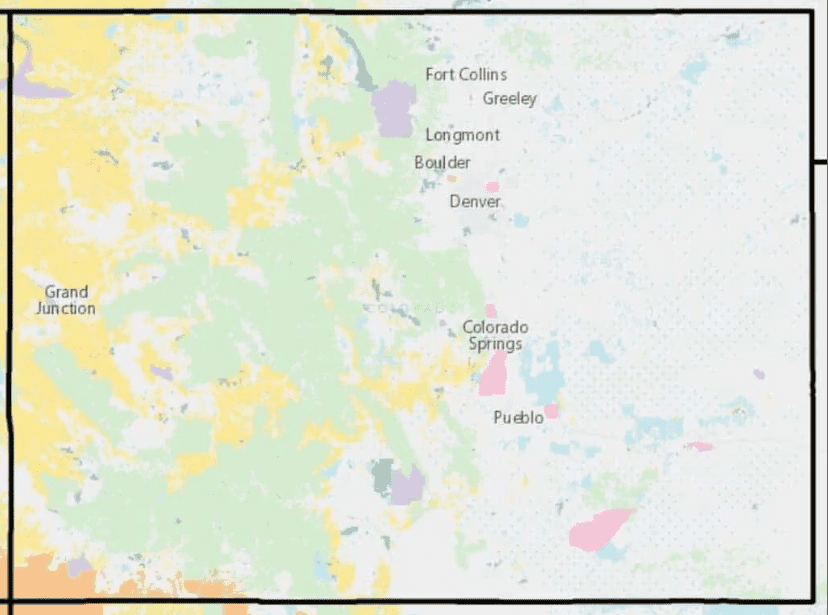
The BLM, the other major public land owner in the state, also allows free camping on its lands. This agency manages over 8.3 million acres in Colorado. Most of this land is on the Western Slope.
However, BLM leases some of its lands for cattle grazing, oil and gas uses, etc., so can’t pitch a tent on any BLM territory, but you can on most of it. It’s best to reach out to one of the four BLM administrative offices in Colorado before going camping within a specific area of their land. These offices are:
If you don’t mind venturing outside the state, yuu can find more BLM dispersed campgrounds in Nevada.
Colorado National Grasslands
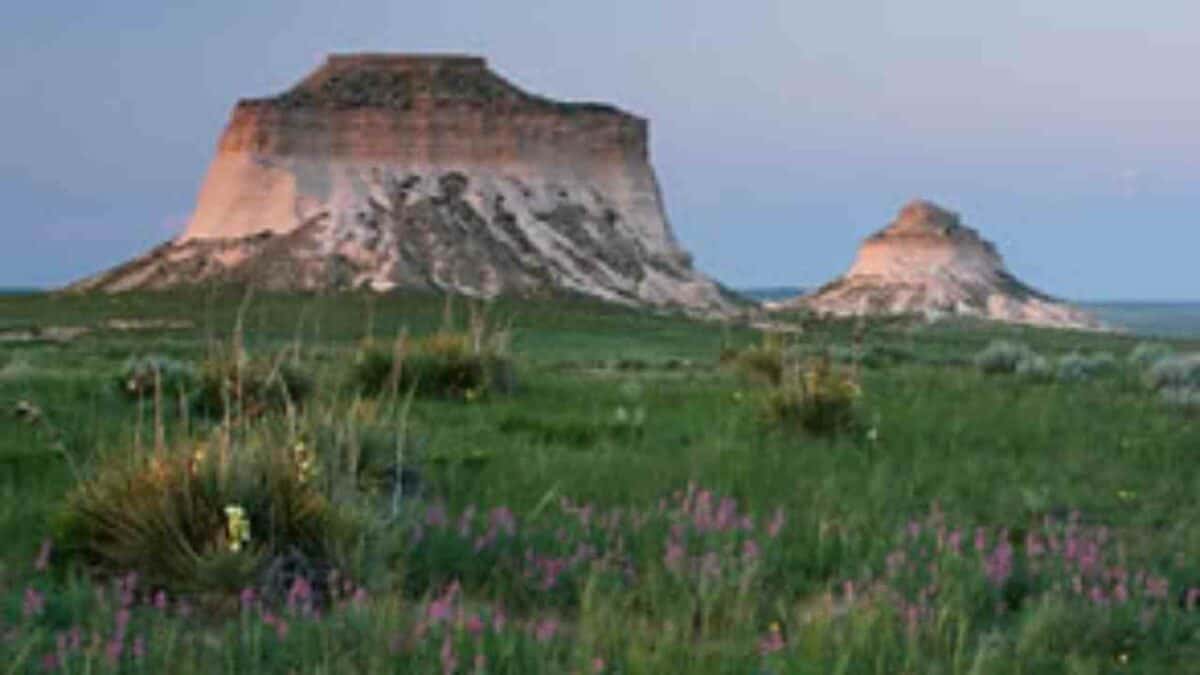
If you are more interested in free camping on less crowded public lands, do know that Colorado’s two National Grasslands also allow dispersed camping:
How Do I Find Colorado Dispersed Camping Areas?
I prefer to use a combination of publicly available BLM/USFS maps and a few websites/apps when searching for a good dispersed campsite in Colorado.
My favorite resources are:
- Campendium: An app and website that allows you to read user reviews of campgrounds and campsites across the US.
- The Dyrt: An app that lets you search for dispersed and free campsites.
- Freecampsites.net: This is my go-to resource for finding free camping in the country. Simply type in your preferred location and filter through the results.
What to Bring When Free Camping

Since you can’t count on finding amenities, facilities, and convenience stores near dispersed campsites, make sure to bring:
- Sleeping bags
- Camping stove and other cooking supplies
- Rain fly
- Extra warm clothes
- Trash bags
- Extra warm clothes
- Multi-tool or a pocket knife
- Flashlight
- Food and bearproof food containers
- Portable toilet
- Drinking water and a water filter
- Small shovel
- Tent and ground cloth
- Bug spray
- Sunscreen
- First aid kit
- Paper of offline maps
Where to Next?
Dispersed camping in Colorado is awesome, but it’s not the only outdoor paradise in the region! If you are done exploring the natural beauties of Colorado or would simply like to explore states with a different vibe, check out some of our other guides, such as dispersed camping in Utah, free camping in Arizona, and free camping in New Mexico.

I love hiking, backpacking, and camping. From the Camino de Santiago to the West Highland Way in Scotland or simply a great day hike on the weekend. Hiking refreshes me, my mind, and keeps my body reasonably fit. So far I have walked three Camino routes and many other long distance hikes in the UK, Canada, and around the rest of Europe. One of the best was my hike up Ben Nevis.

